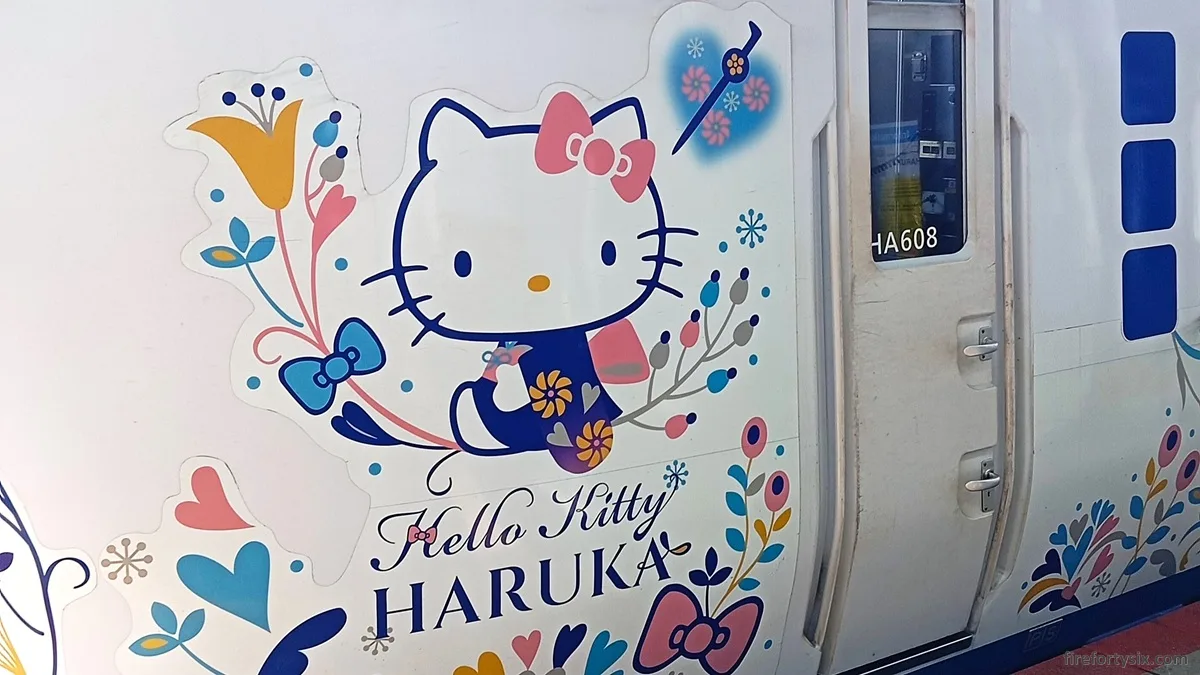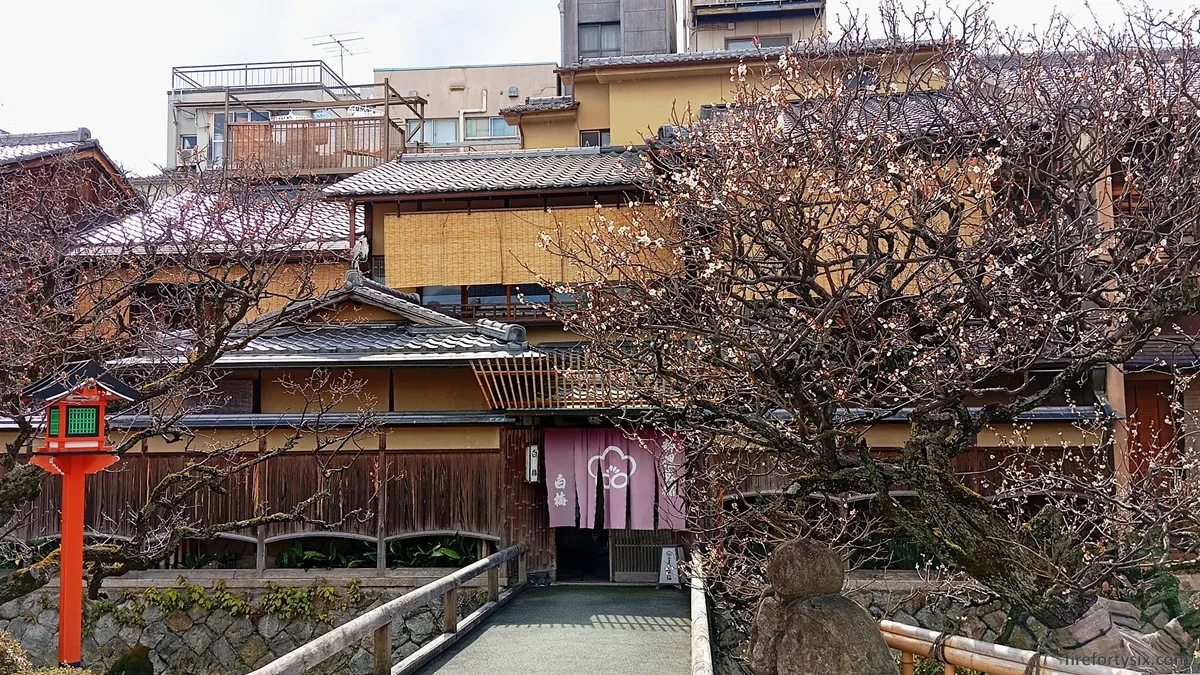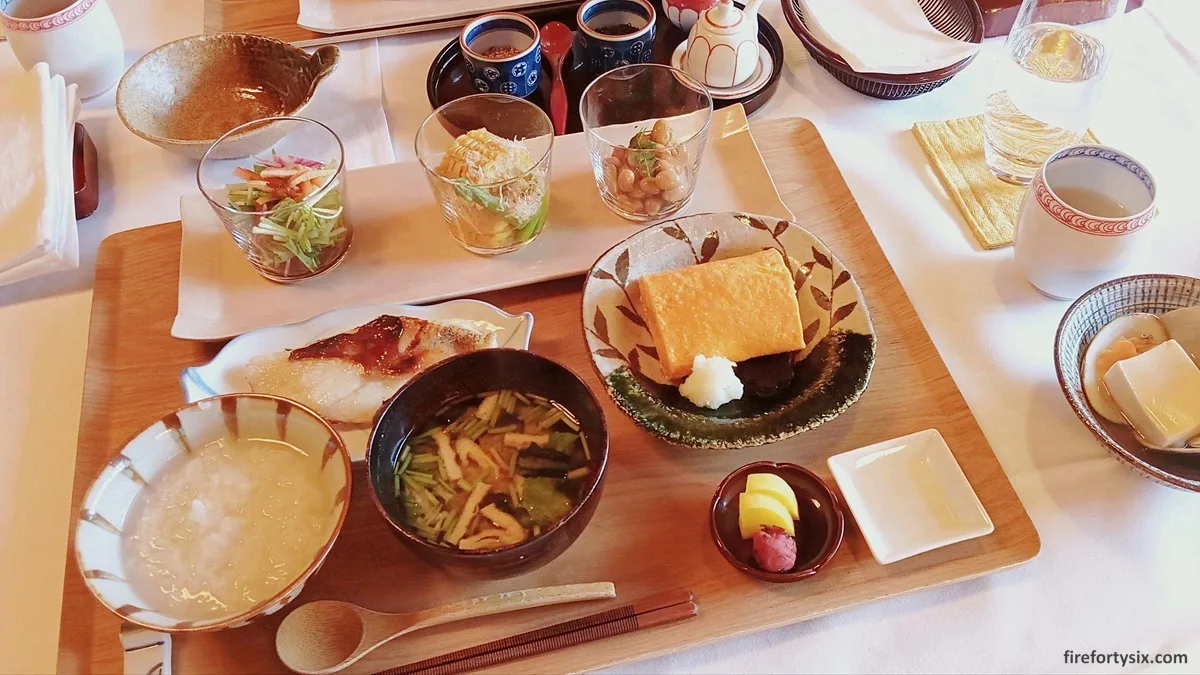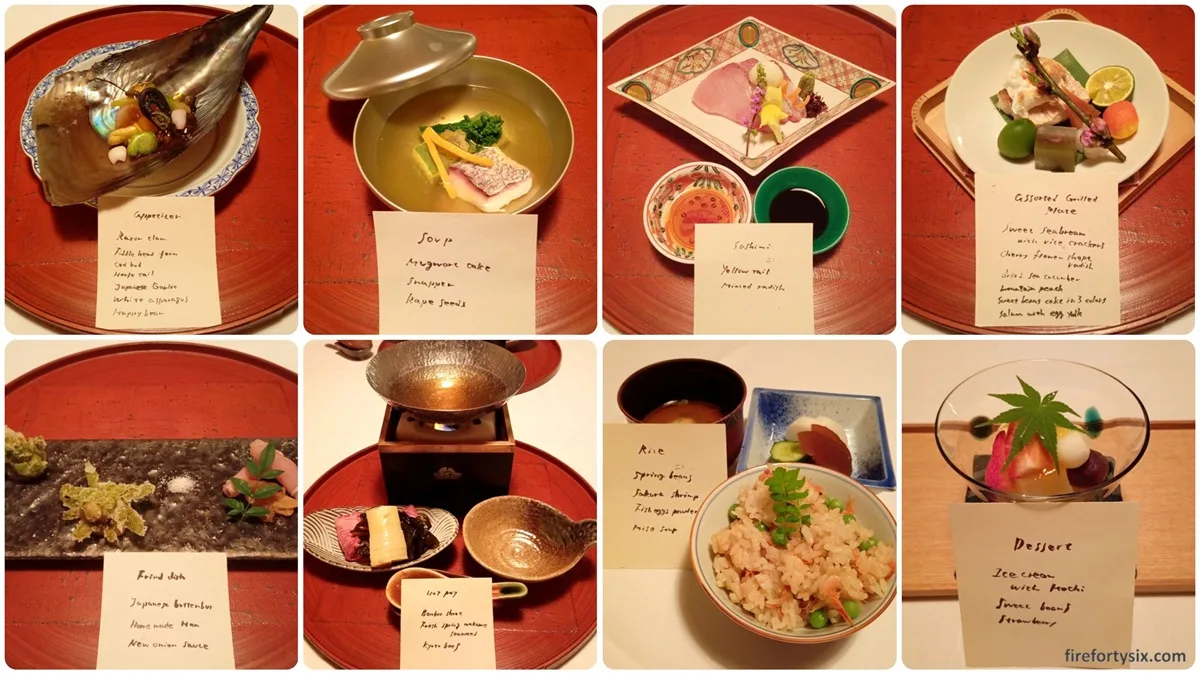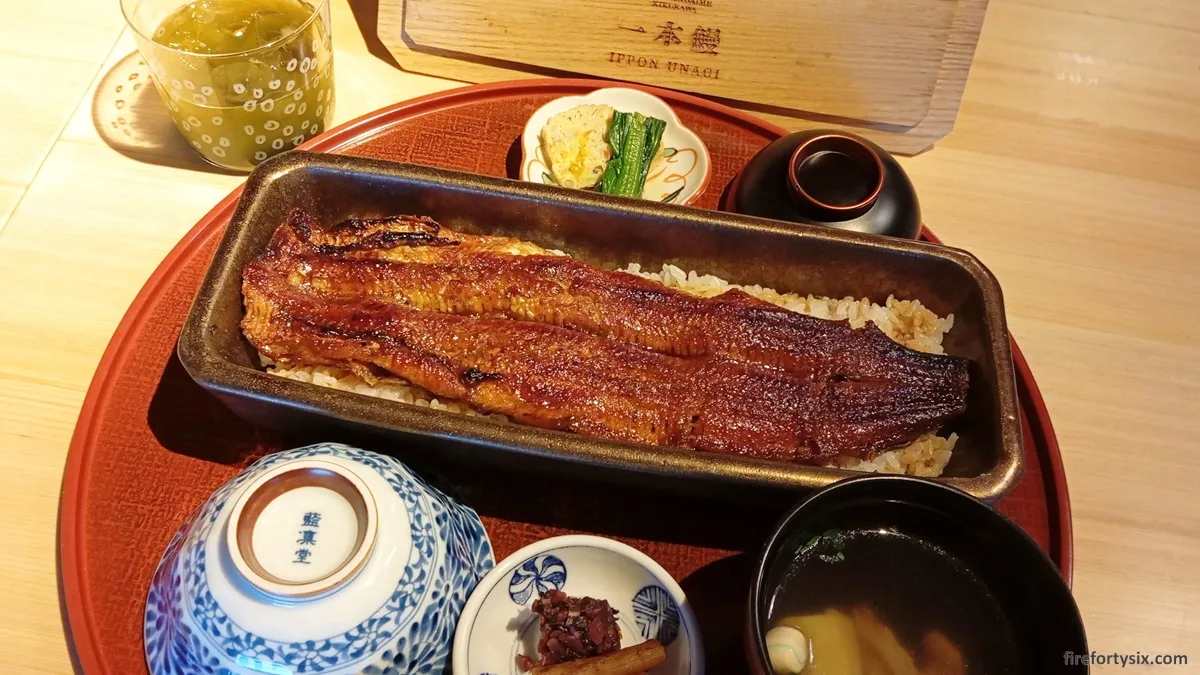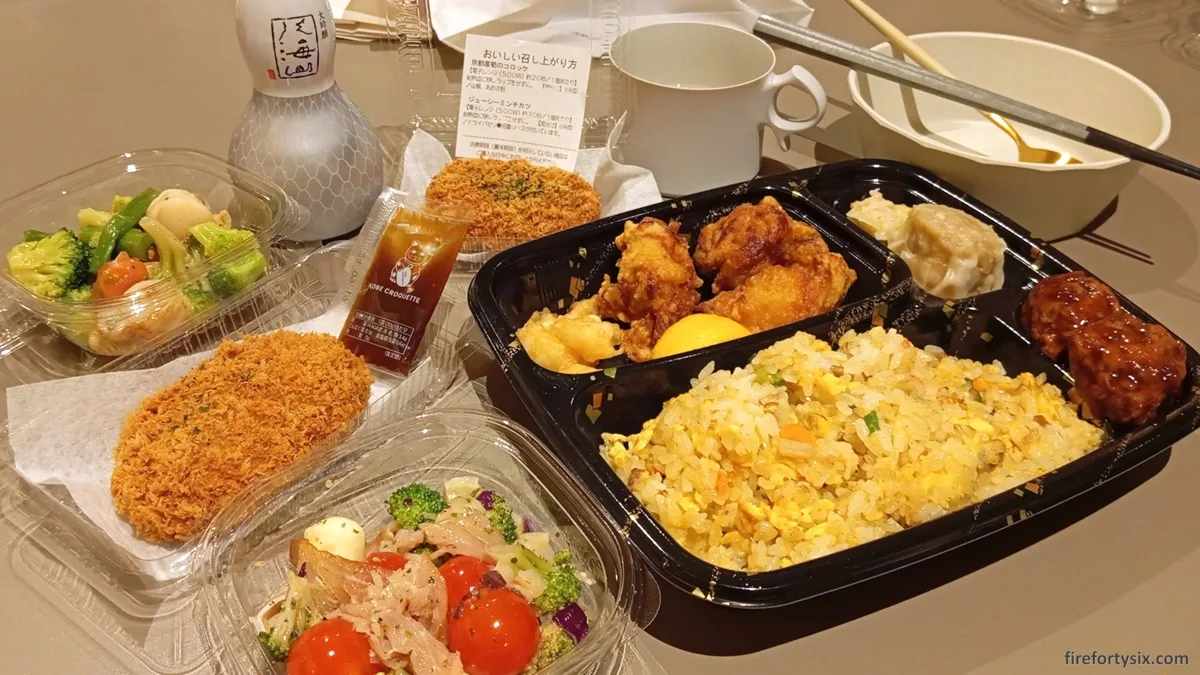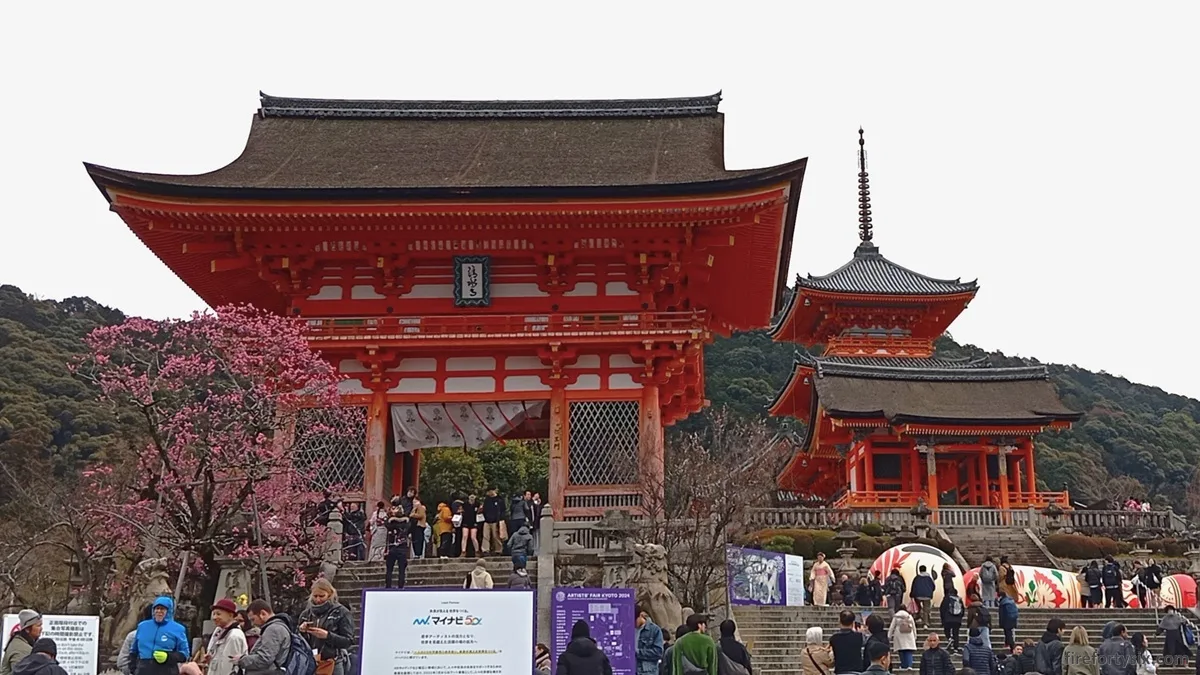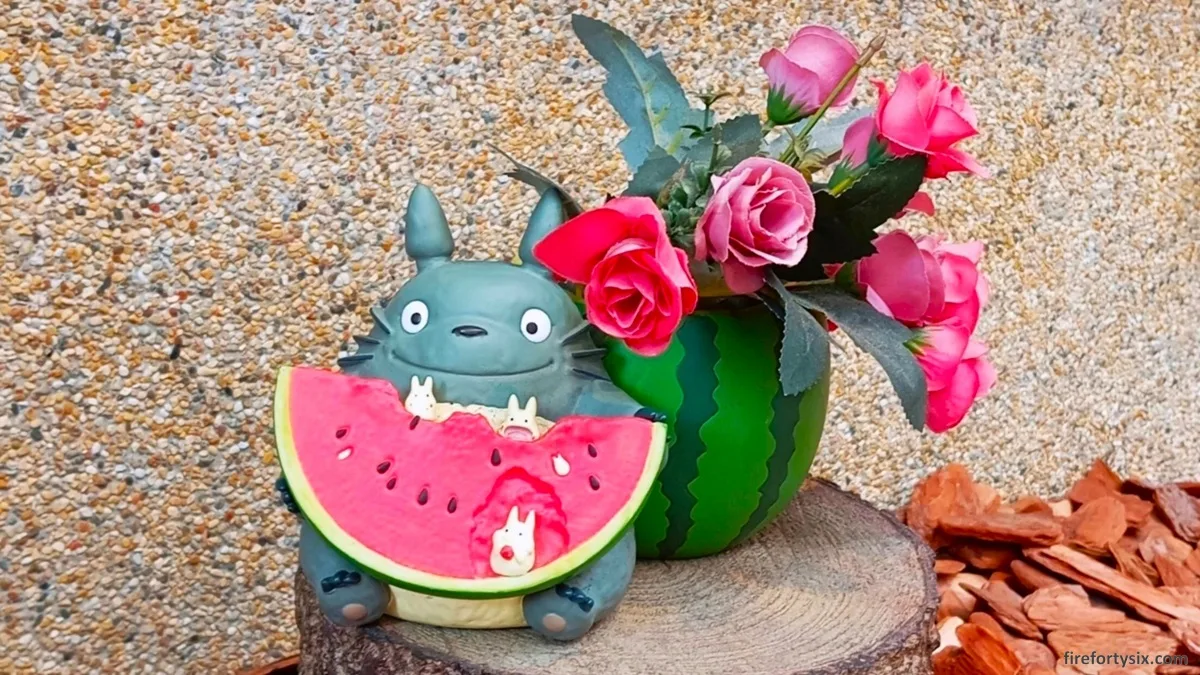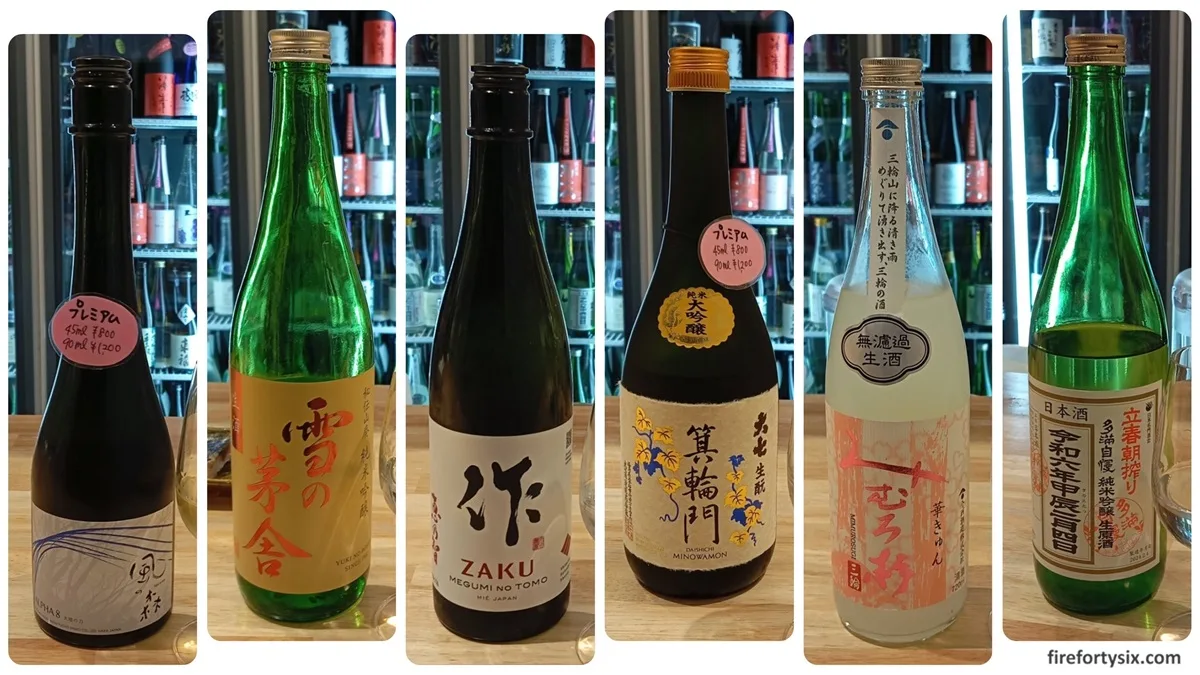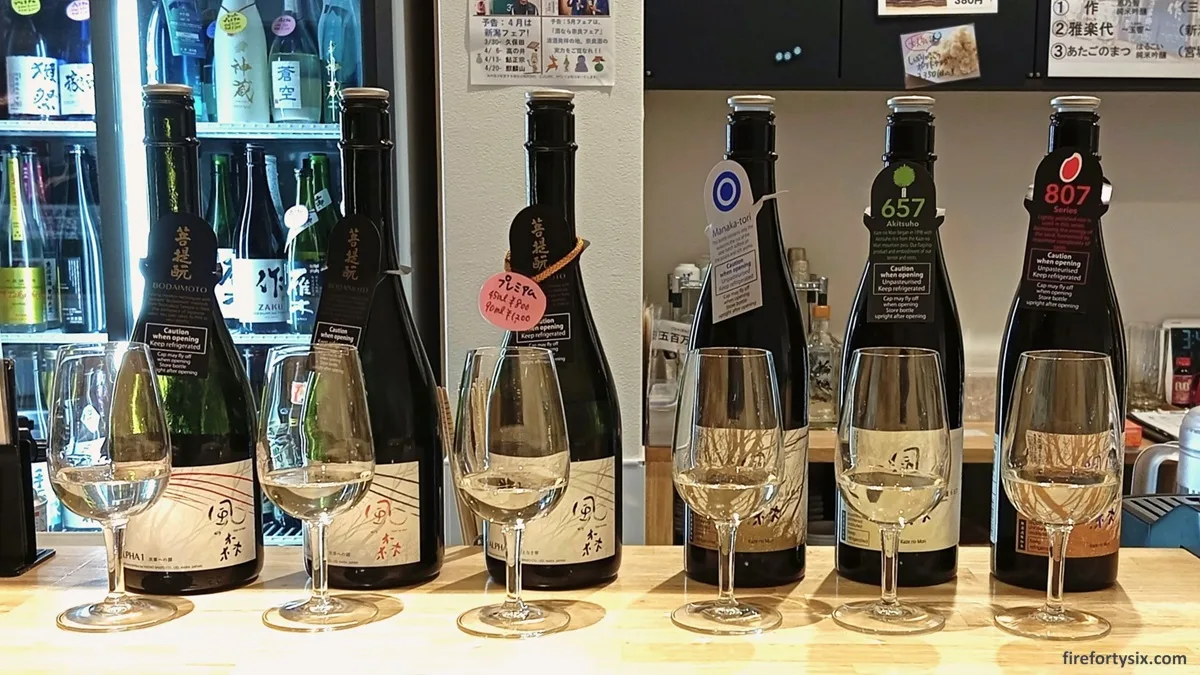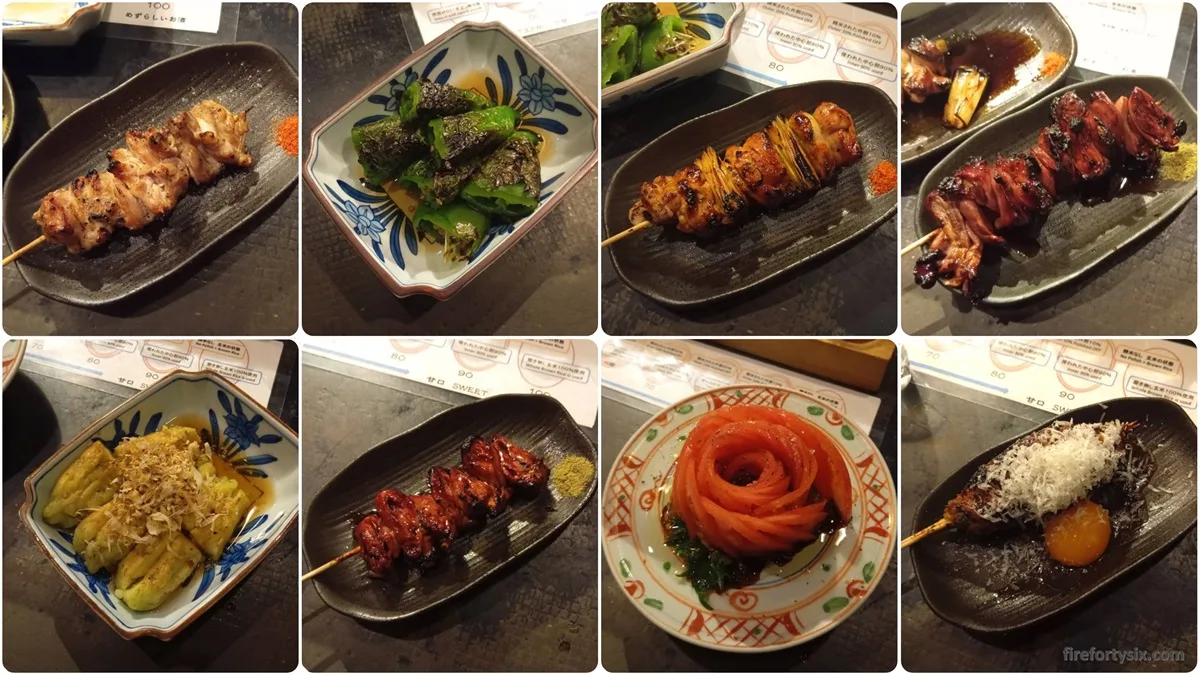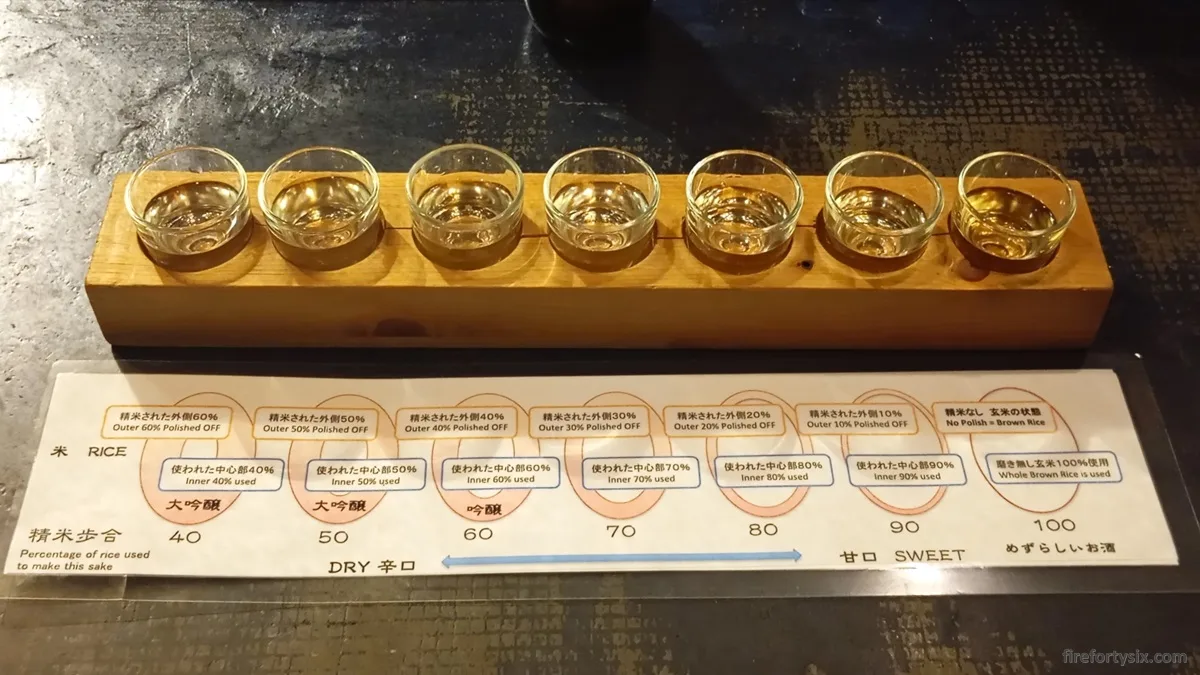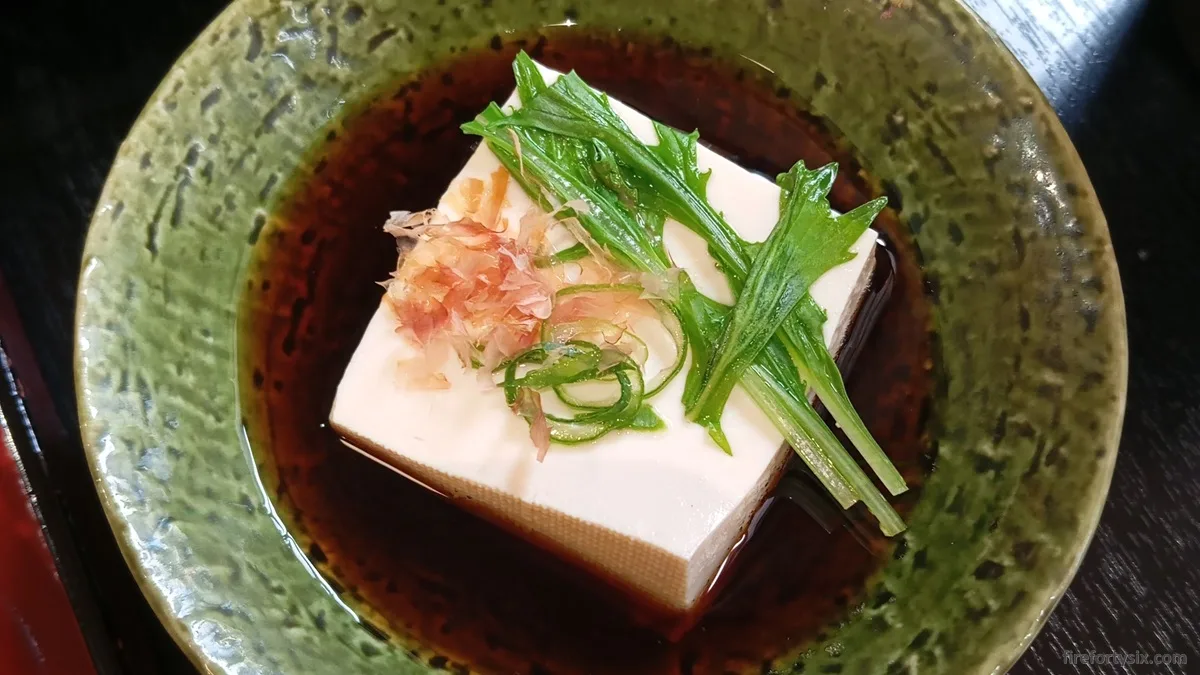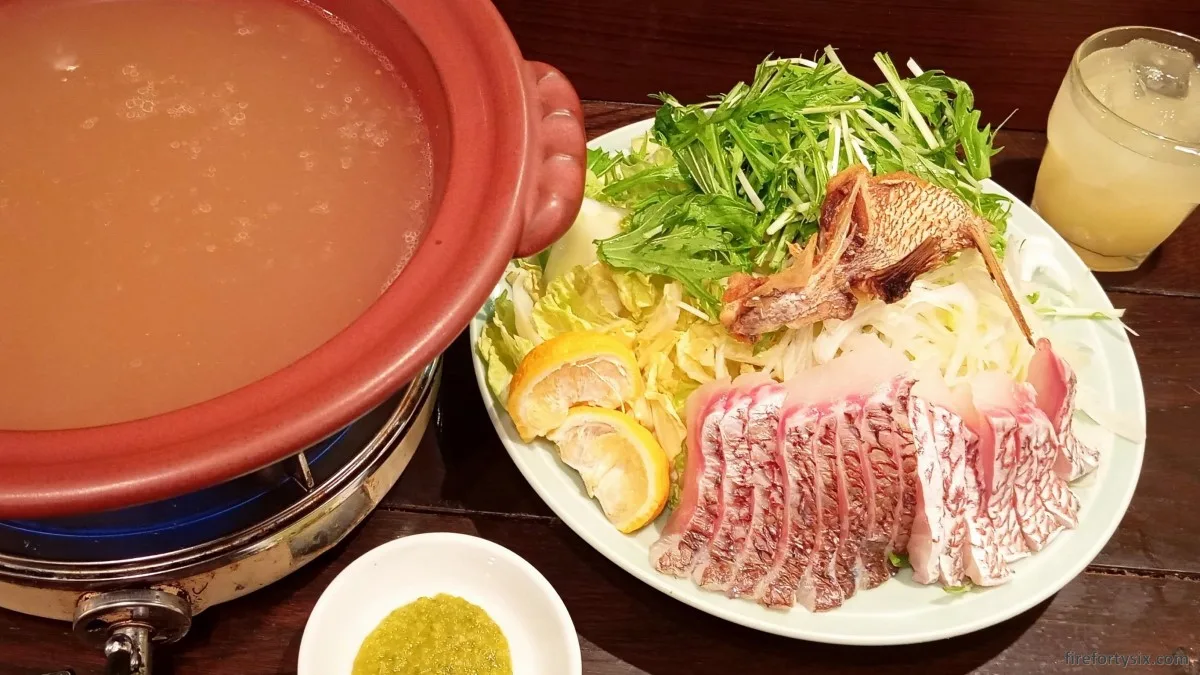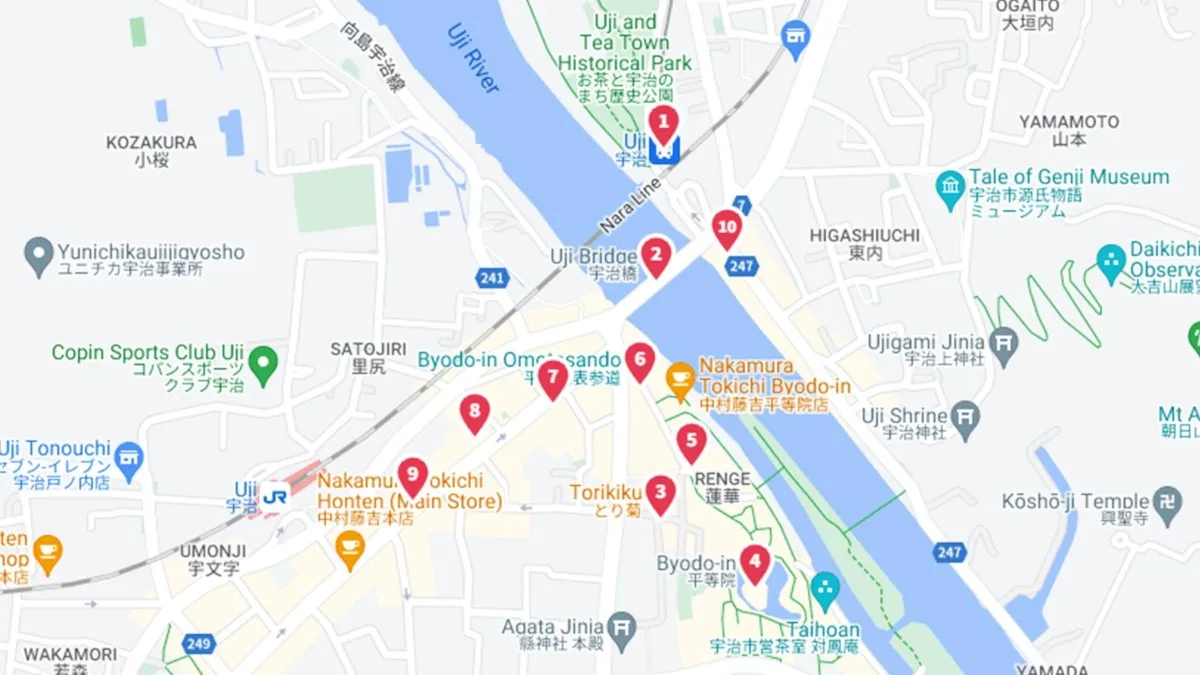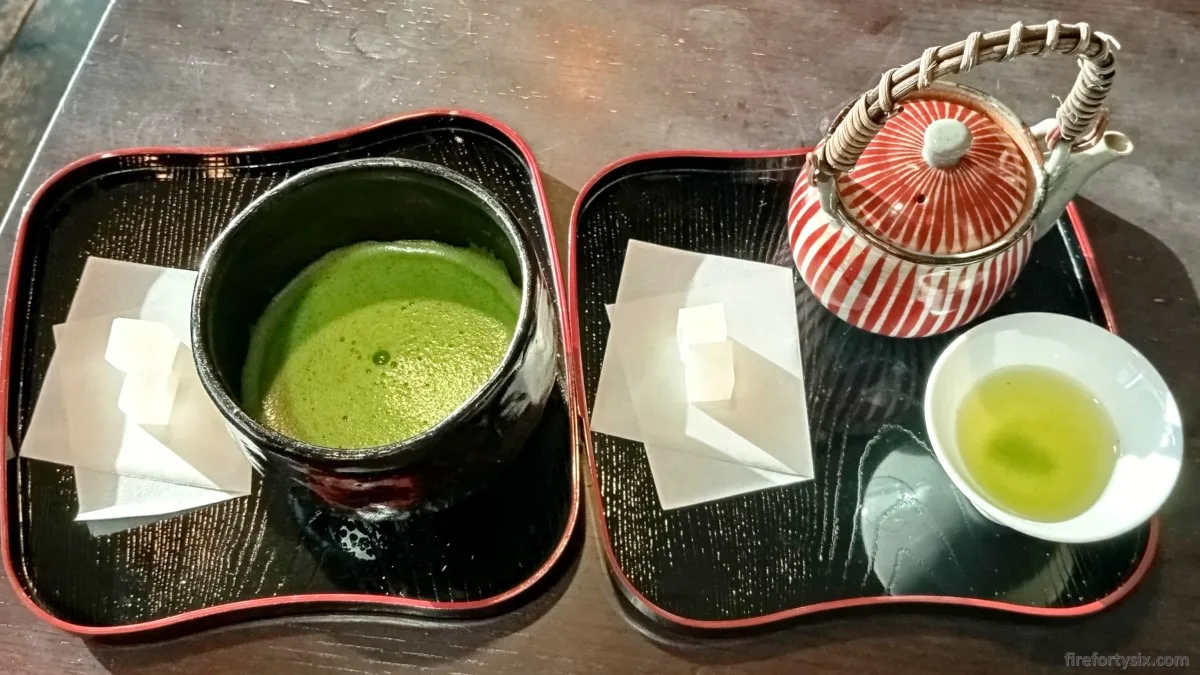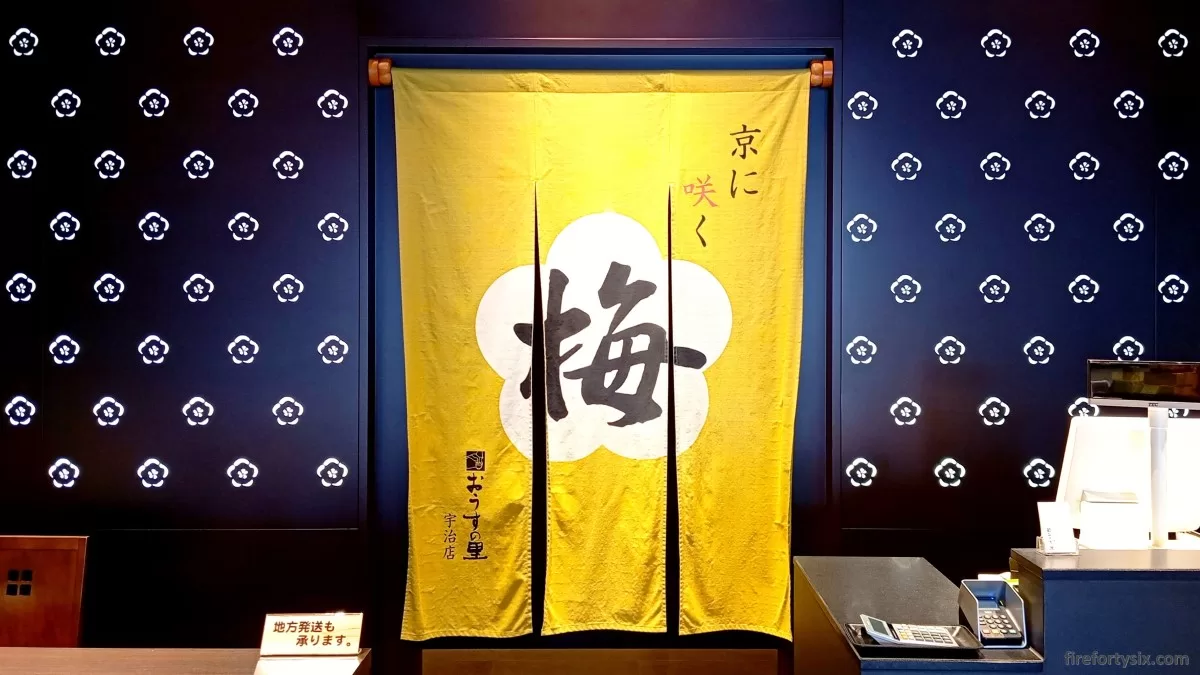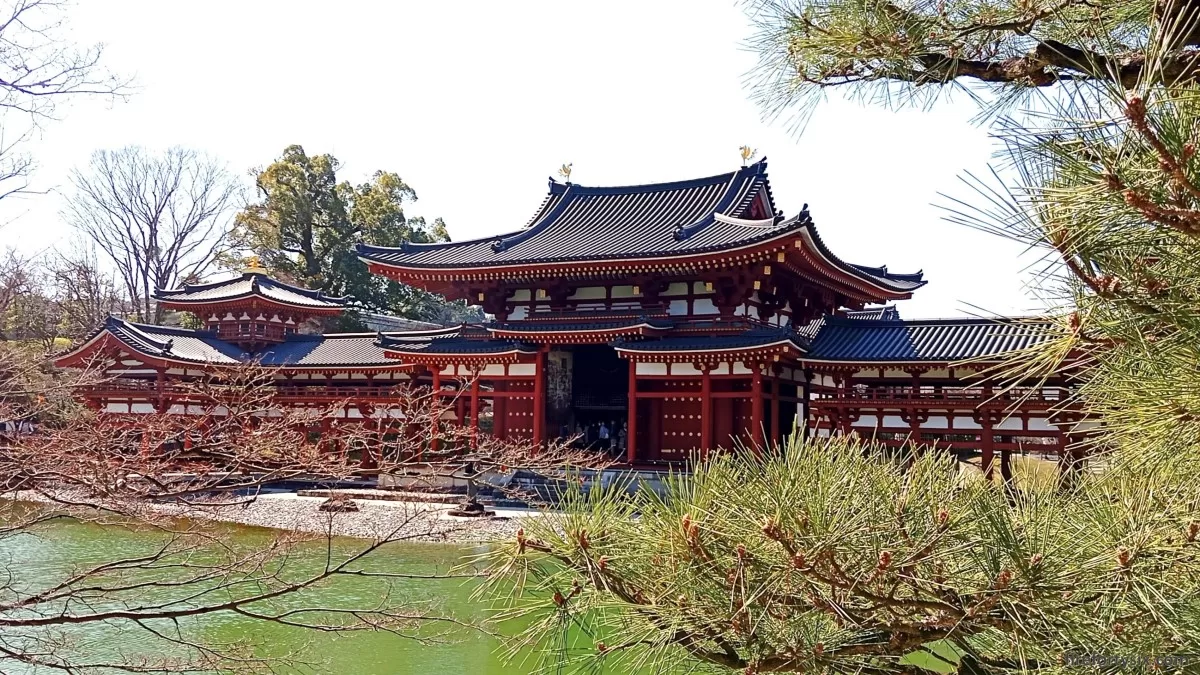The sights of Kyoto are spaced far apart, with Arashiyama in the west, Kinkakuji in the north, Higashiyama in the east and Fushimi Inari Taisha in the south.
During our first trip there almost six years ago, we took the train out to Arashiyama and Fushimi Inari Taisha. Naturally, they were very crowded, but seeing them in real life was worth the journey.
This time, we decided to explore the city on foot. Except for our train ride in and out of Kyoto, plus a day trip via Keihan Rail to nearby Uji, we pretty much walked everywhere.
OMO5 Kyoto Gion Hotel
Our base for five out of six nights was OMO5 Kyoto Gion, right in the heart of the traditional geisha district and literally across the street from both Yasaka Jinja and Hanamikoji.
Kawaramachi was just a short stroll away, providing quick and easy access to Pontocho and the bustling downtown core with an abundance of dining options.
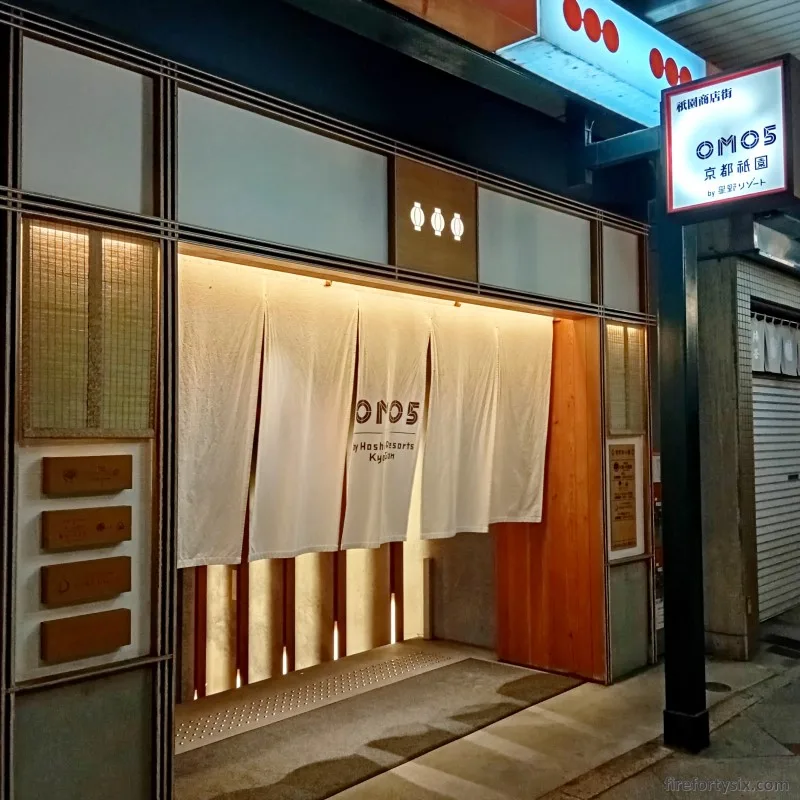
When planning our trip, I had mapped out a tentative route that would start at our hotel and finish at Ginkakuji, the Silver Pavilion. Along the way, we’d pass Nanzenji Temple and the Philosopher’s Path.
Armed with the ever-trusty Google Maps, we strapped on comfortable walking shoes and started our northbound trek on an overcast Monday morning.
You might assume that we had set off at daybreak, but you’d be mistaken. Because we’re lazy old folks who prefer to sleep in during vacations and start our days late.
Chionin Temple
Even though Yasaka Jinja was a stone’s throw away, we skipped it and left it for another day. Instead we turned left at the junction and kept walking uphill.
The first place of interest we encountered was Chionin Temple. The wide entrance gate looked inviting and the map of the compound outlined the interesting buildings within.
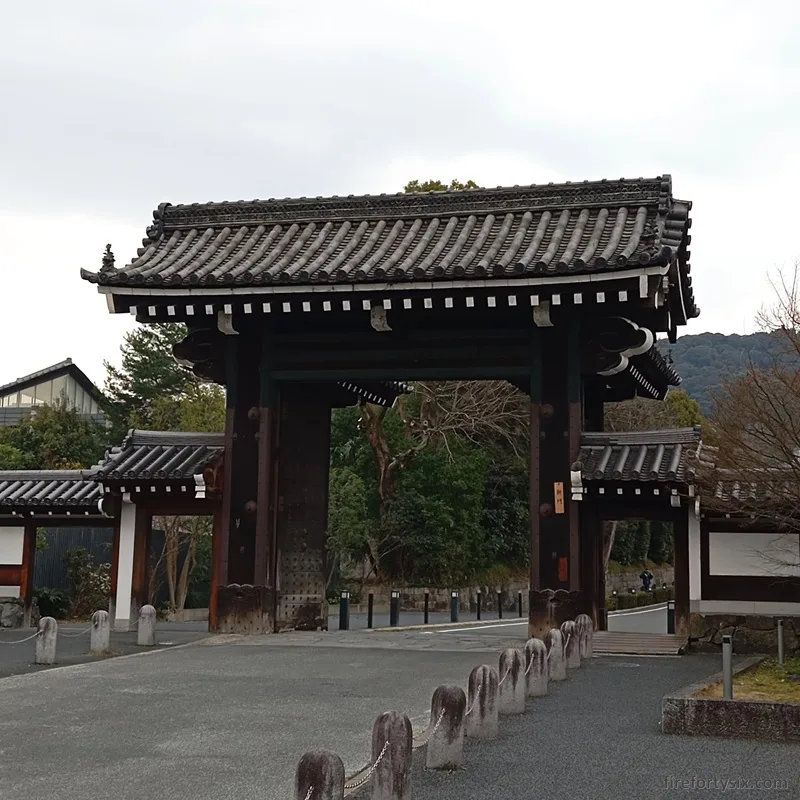
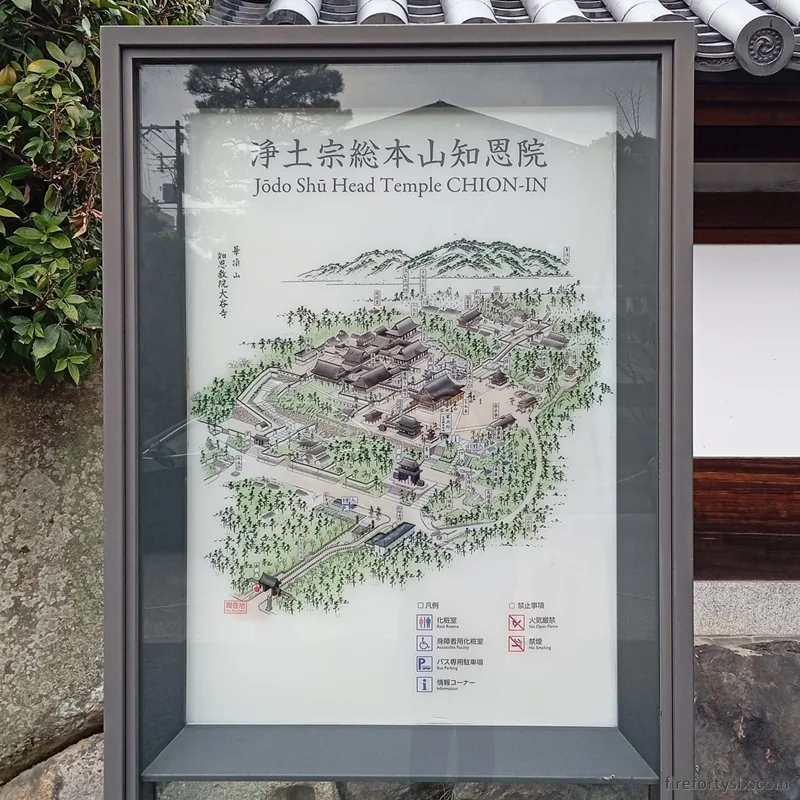
As I was considering whether to spend time there, The Wife was happily snapping photos of cherry blossoms outside that had decided to get a head start on the season.
It was still early days and widespread blooms weren’t expected in Kyoto until a couple of weeks later, but that didn’t stop the more adventurous flowers.
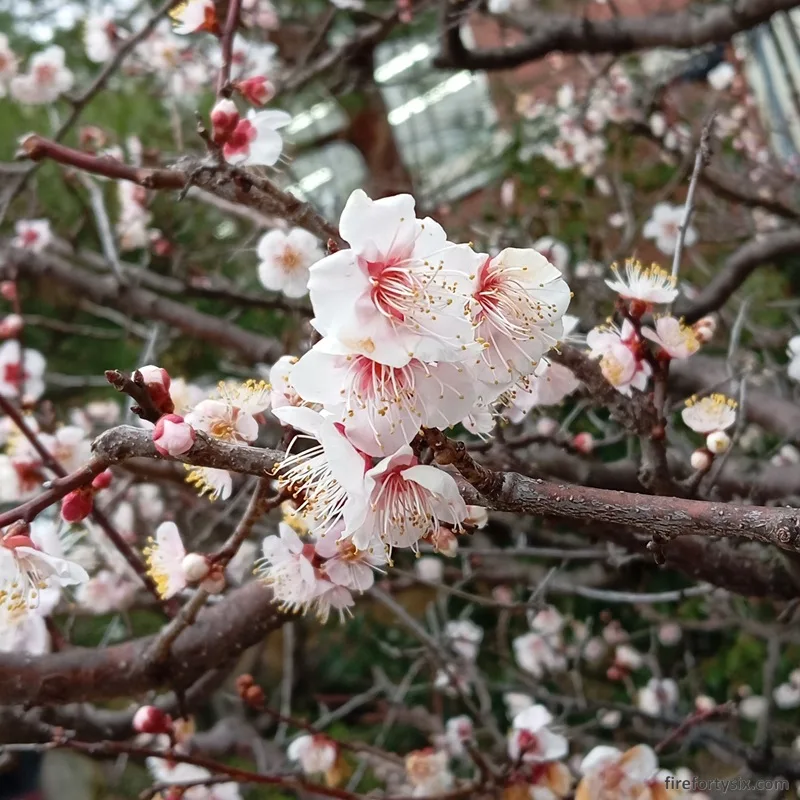
We’d be passing by many temples and shrines on our path, so I decided to skip Chionin Temple in favour of an early lunch.
Rengetsujaya
Tofu is one of our favourite foods, and Kyoto makes the best tofu dishes in the world. Where else would you find an entire fine dining course meal dedicated to the humble ingredient?
Many highly-rated tofu restaurants can be found in the Higashiyama district, and I decided to choose Rengetsujaya. We didn’t make reservations in advance, but were lucky enough to get seats.
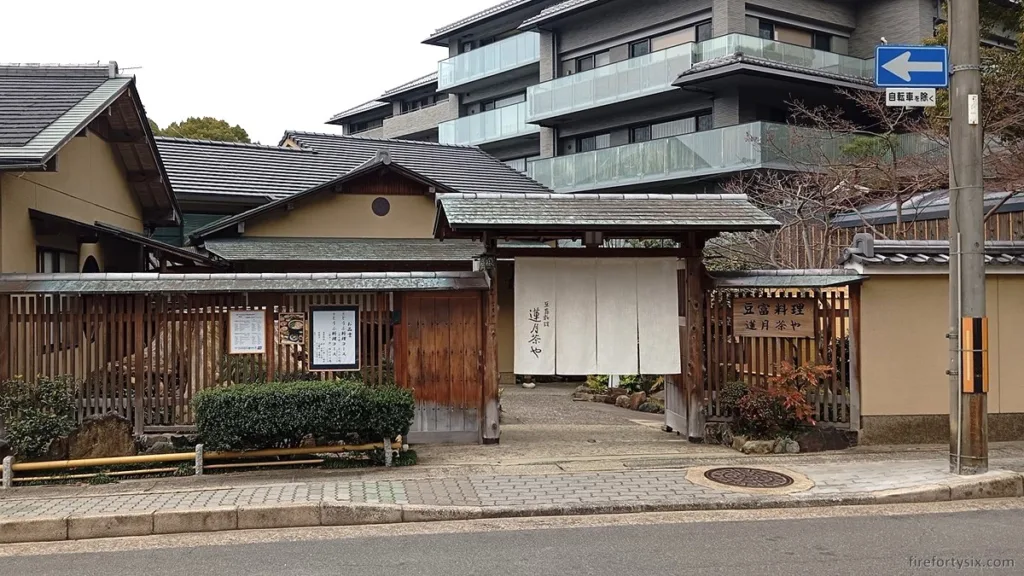
Lunch was a 10 course kaiseki served in a traditional tatami-floored room, showcasing tofu in a myriad of different tastes and textures.
Dishes included namafu sigureni, takigawa tofu, crab tofu, namafu dengaku, tofu gratin, boiled yuba, koya tofu and yudofu.
Throughout the entire meal, we were filled with a sense of inner calm. We could feel time slowly passing by and it all felt very zen. It was one of the most elegant meals we’ve ever had.
Furukawacho Shotengai
Sufficiently nourished, we spent the next hour or so wandering around the neighbourhood, admiring the ancient architecture and serene scenery.
I wanted to reach Nanzenji Temple at some point in time, and headed in its general direction. But we didn’t follow a predetermined route, choosing to let our whims guide us.
One of the places that caught our eye was a quiet little shotengai, or shopping street. Pastel-coloured round lanterns hung from its ceiling, drawing us into its sheltered walkway.
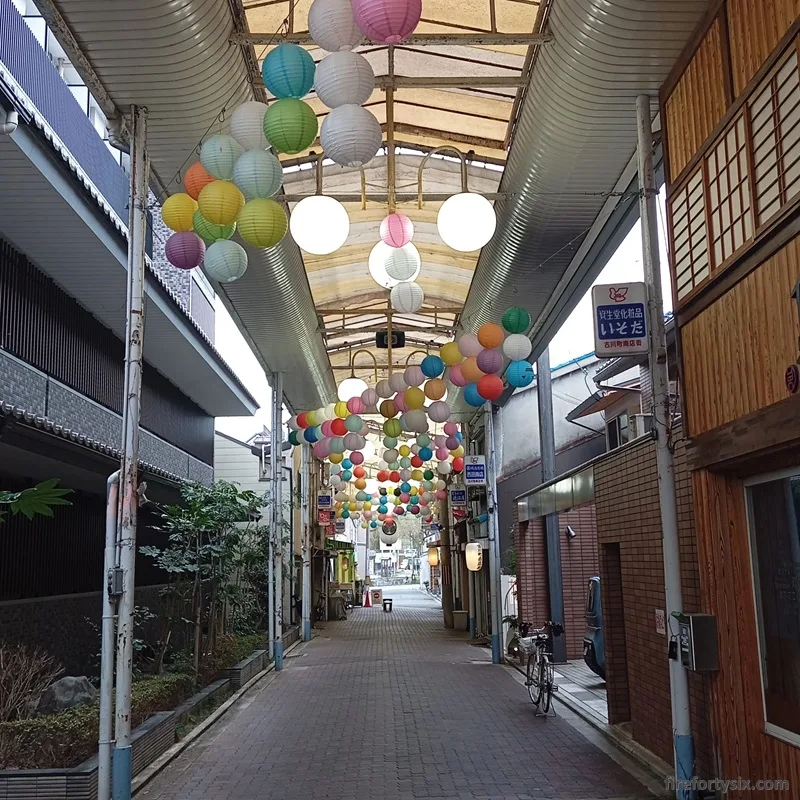
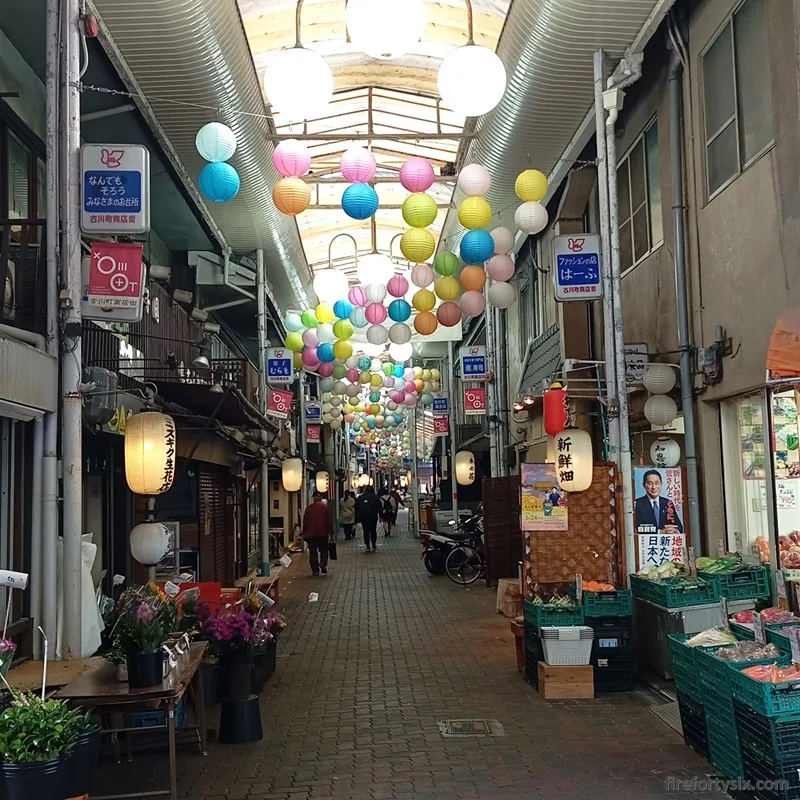
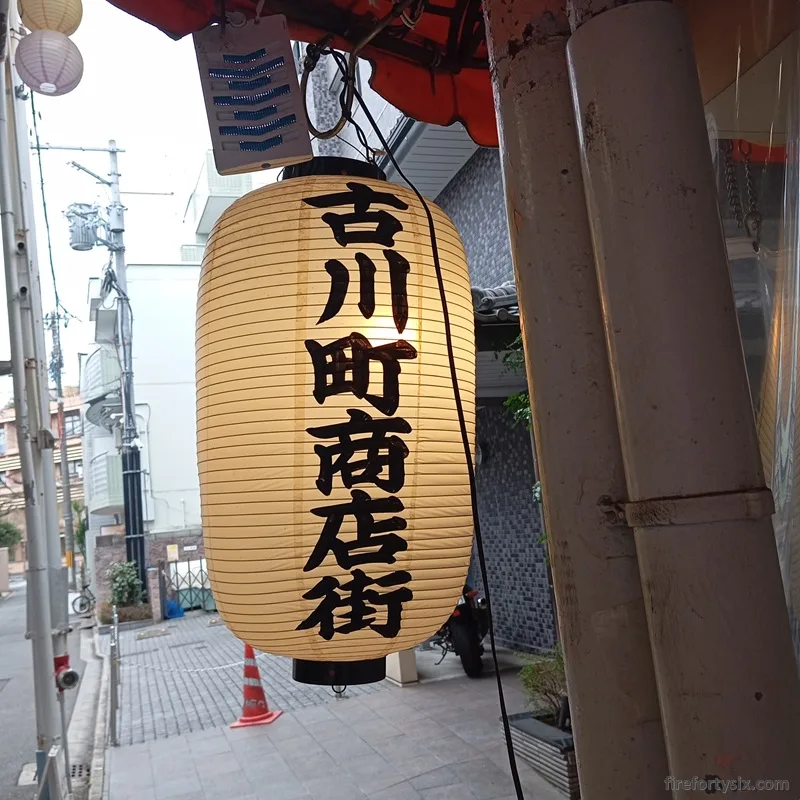
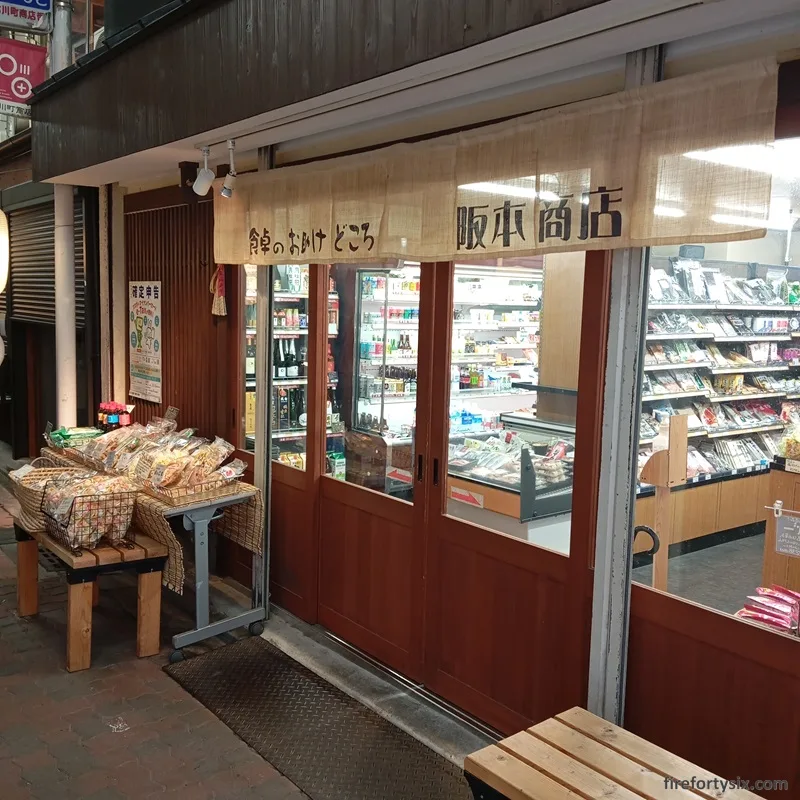
It wasn’t particularly big, but what it lacked in size, it made up for in character. Quaint little shops lined the walkway, including grocery stores stocked with fresh local produce.
Compared the large shotengais like Teramachi-dori located downtown, it was comparatively tiny. But it was good enough for the locals living nearby, and that was, I guess, good enough.
Kyoto’s charm is not just restricted to its towering temples or majestic mountains. It also manifests itself in its sleepy suburbs, home to small local vendors and narrow paths bridging slow-moving streams.
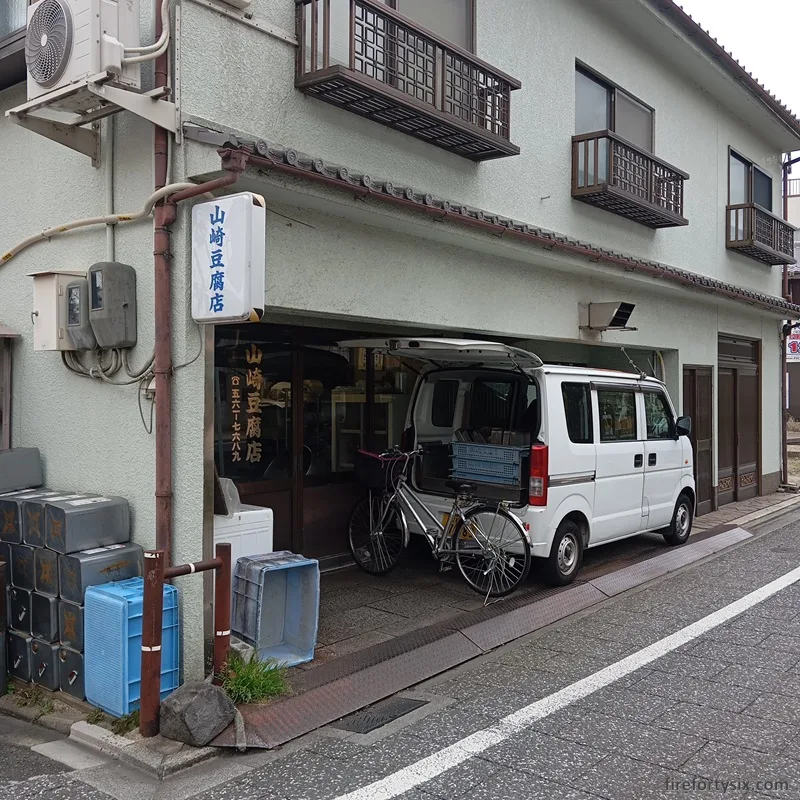
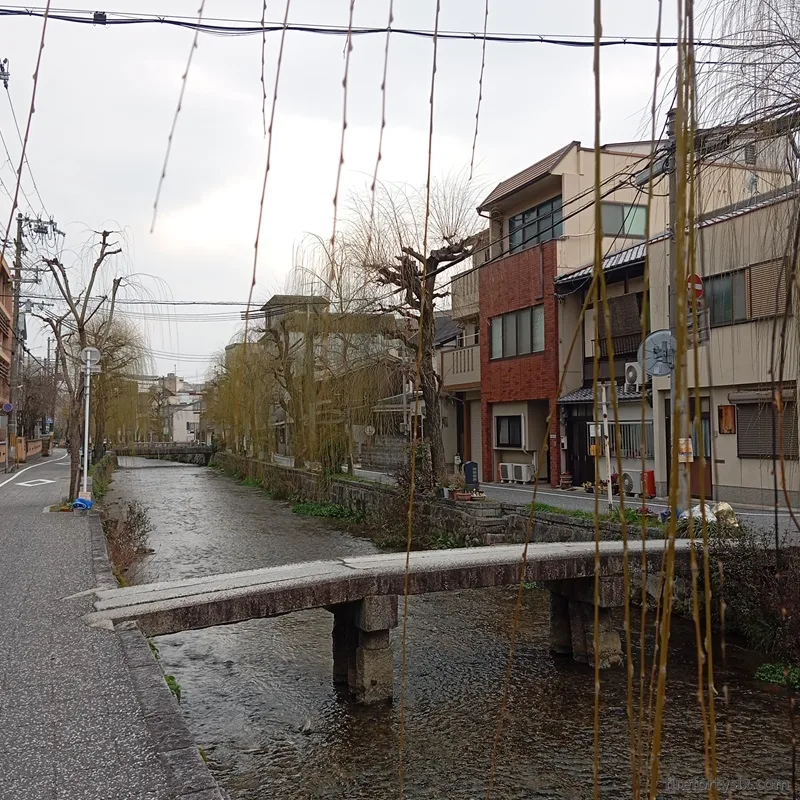
Sakura trees lined the small but well-maintained roads, their bare branches looking more than a little forlorn.
But now and then, we’d come across a maverick tree that bucked the trend. They provided a preview of the riot of colour that would burst forth during the city during peak flowering season.
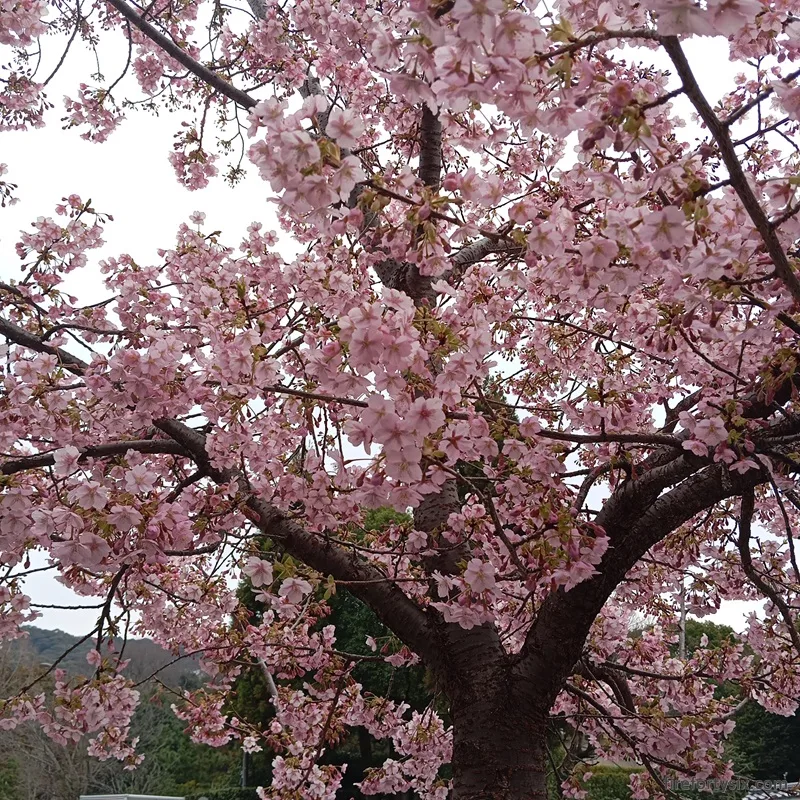
Heian Jingu Grand Torii
As we progressively got closer to Nanzenji Temple, we saw a torii down the road. It stood there stoically, silently beckoning us to approach.
Like gravity, we couldn’t resist its irresistible pull and inched closer and closer.
Even from the distance, we could tell that it was large. But it wasn’t until we were upfront and personal that its true scale revealed itself.
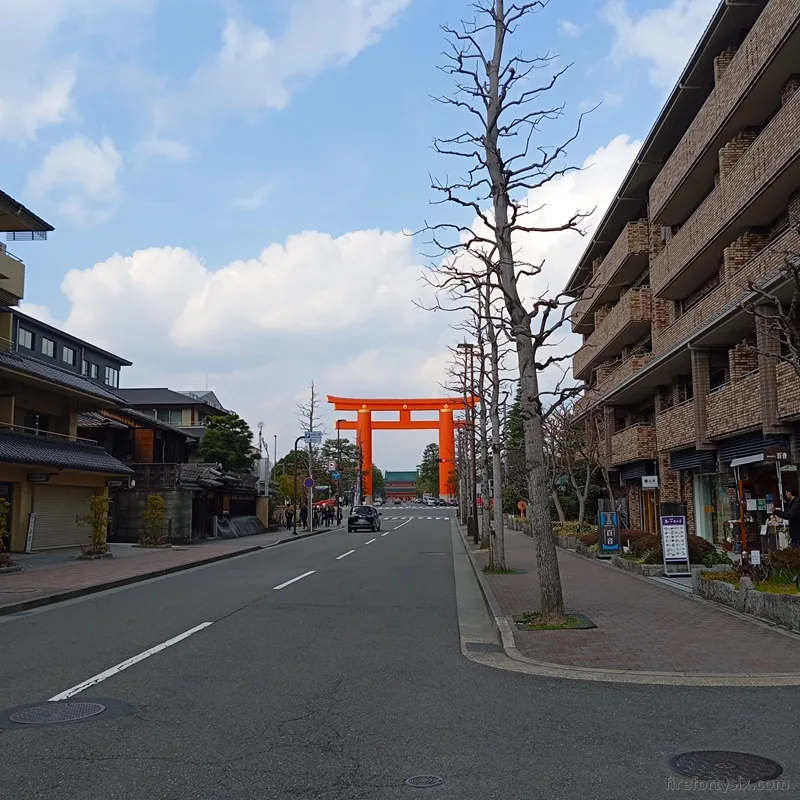
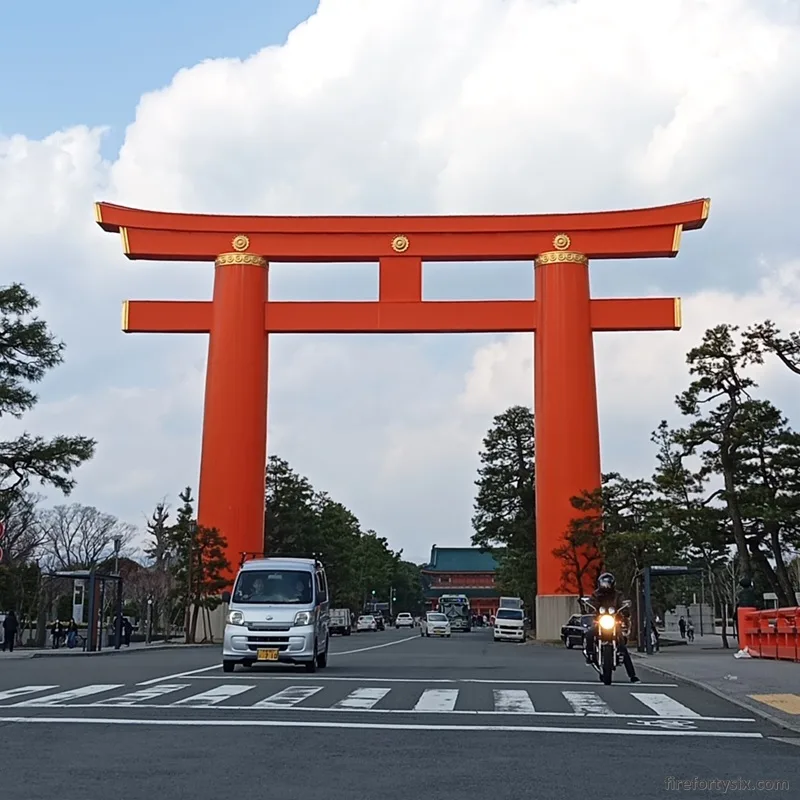
A quick online check revealed that this was the Heian Jingu Grand Torii.
Fushimi Inari Taisha strives for numerical superiority with its 10,000 red toriis but, in my opinion, Heian Jingu takes the cake with its hugemongous Gundam-sized monument.
Blue Bottle Coffee Kyoto
I’ve been a fan of Blue Bottle Coffee ever since I visited their flagship Samcheongdong store in Seoul. The baristas there were knowledgeable and enthusiastic, even when faced with an unending stream of customers.
Since there was a Blue Bottle store on the path to Nanzenji Temple, I thought it would be nice to check it out and maybe pick up a few bags of African beans.
Except for the iconic blue-coloured logo, it wasn’t immediately obvious that this was a coffeeshop. Quite the opposite, it could easily have passed off as someone’s residence.
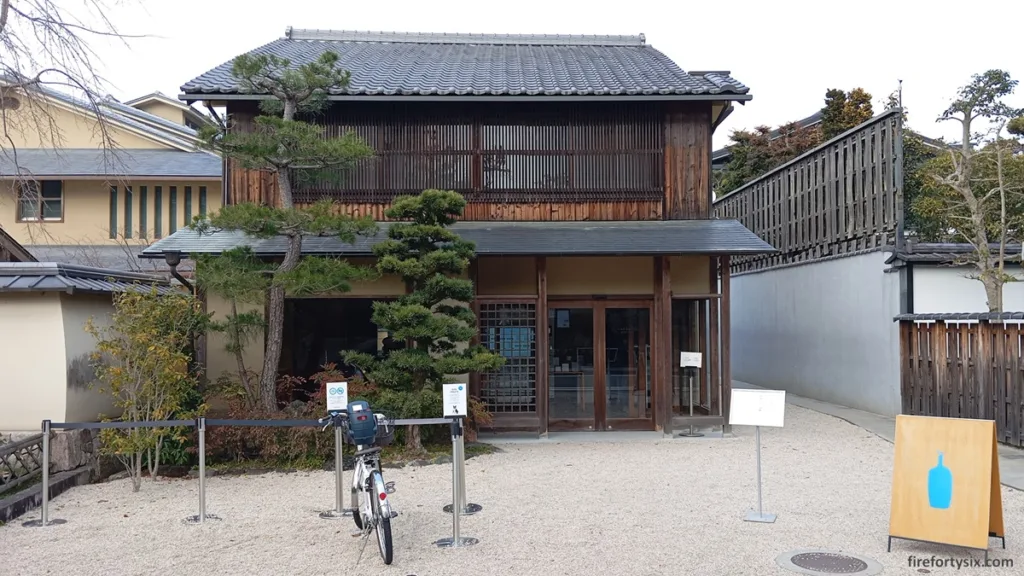
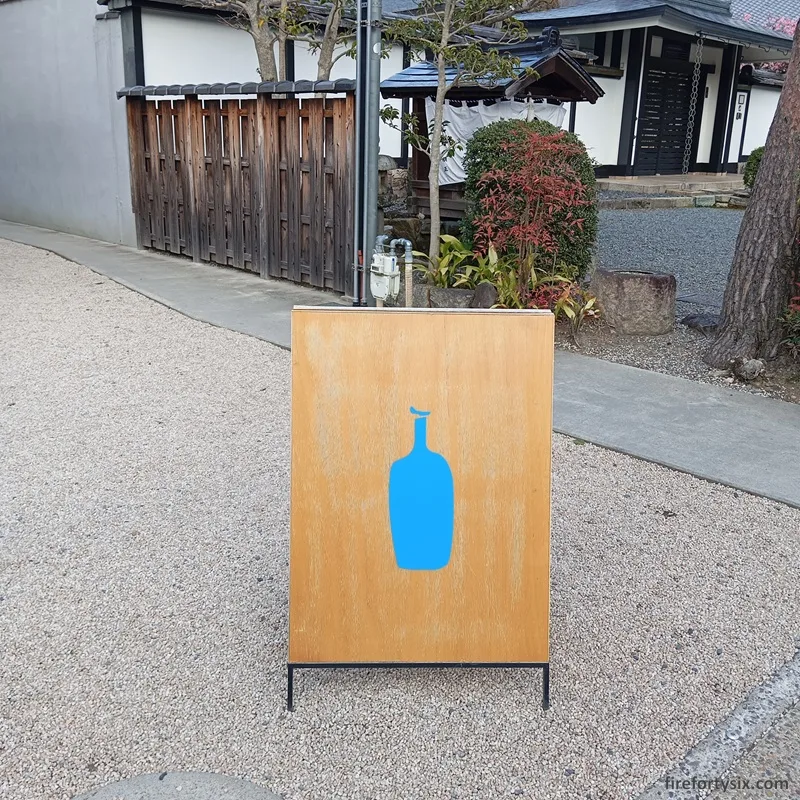
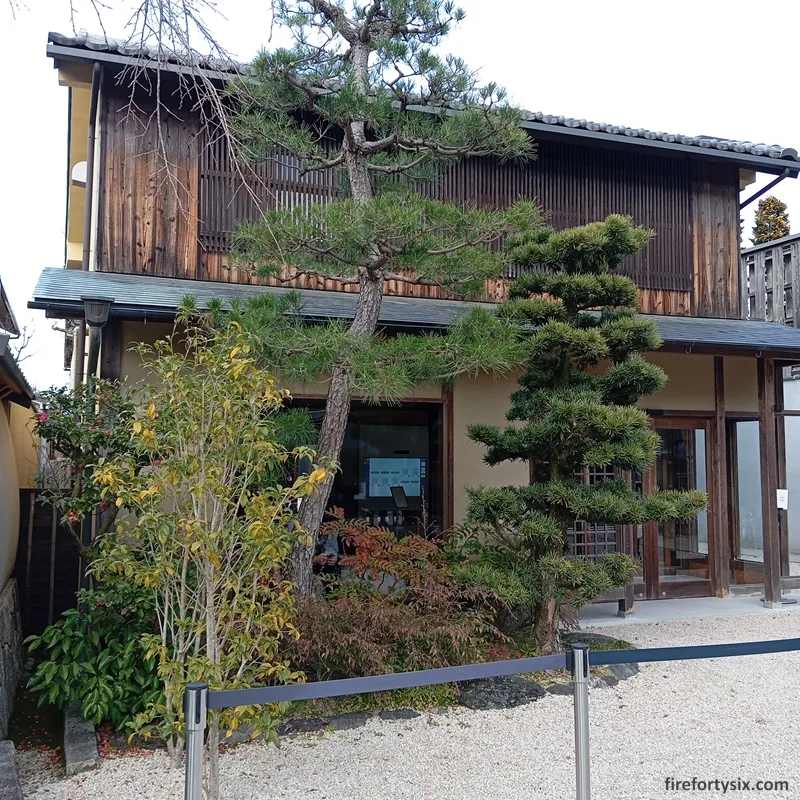
The first thing I checked out was their selection of roasted whole bean coffee. Prices were higher than those in Seoul, but the selection was quite similar.
Roast dates were not printed on the bag and I approached the nearest available barista. He flashed me a disinterested look, almost bordering on annoyance, consulted a folder and provided a monotone reply.
Even though I already had a couple of bags in hand, his response completely turned me off. I thanked him for the information, placed the coffee back on the table and walked away.
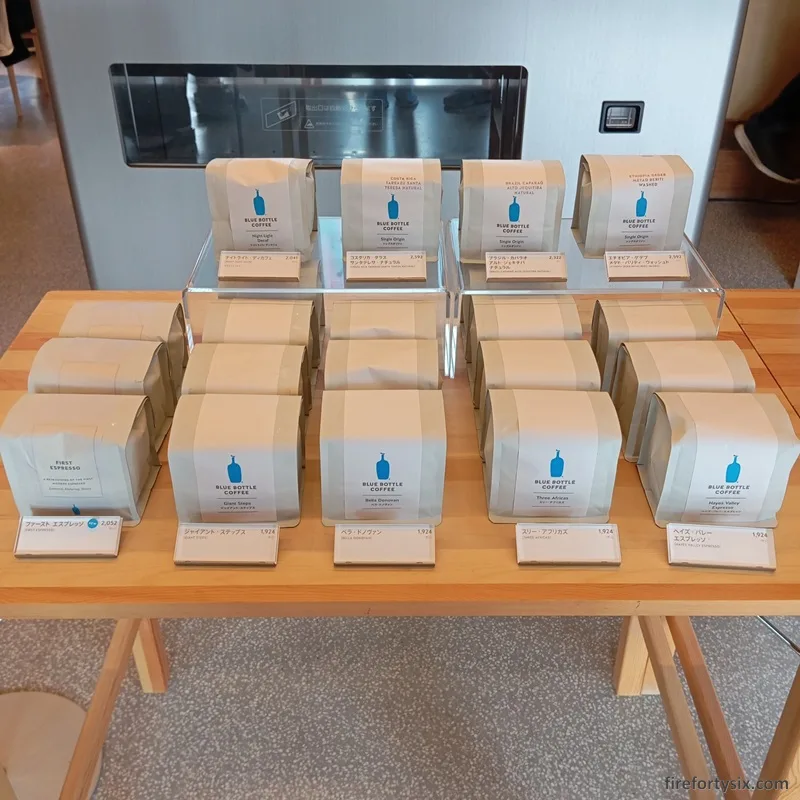
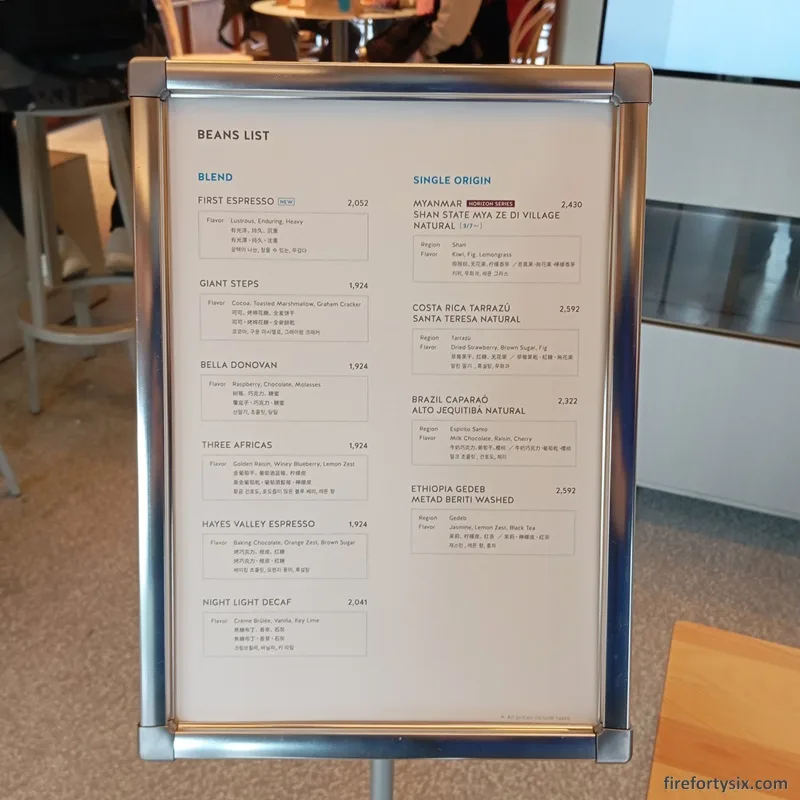

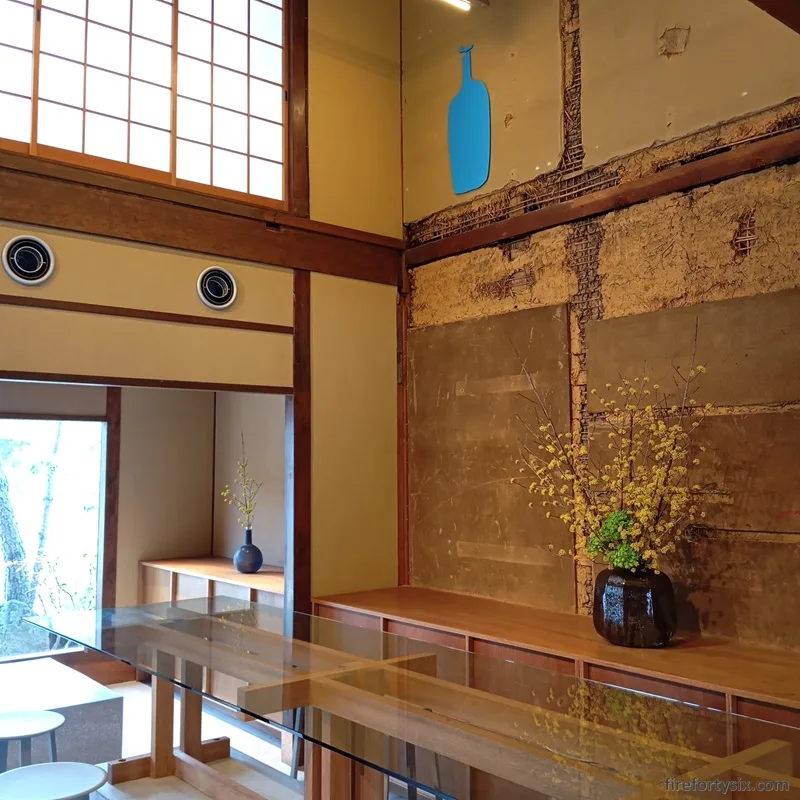
Blue Bottle Kyoto had one less customer that day, but I was merely an insignificant drop in the vast blue ocean.
There were numerous customers in the store and almost all of them were taking photos of their drinks, together with the beautiful decor.
I left somewhat disappointed, but The Wife managed to get some beautiful shots. Not just of the building and its interior, but also some interesting native flora.
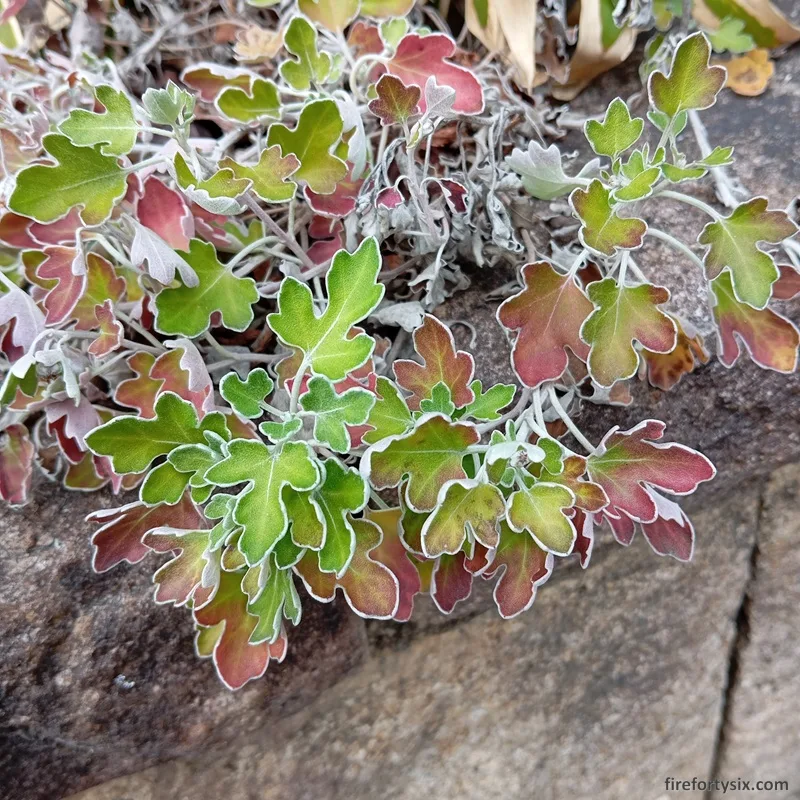
Nanzenji Temple
Finally, we reached Nanzenji Temple, the halfway point of our pedestrian excursion.
The faded map illustrated the main buildings and pathways, revealing a compound that was significantly large but still compact enough to cover in an hour or so.

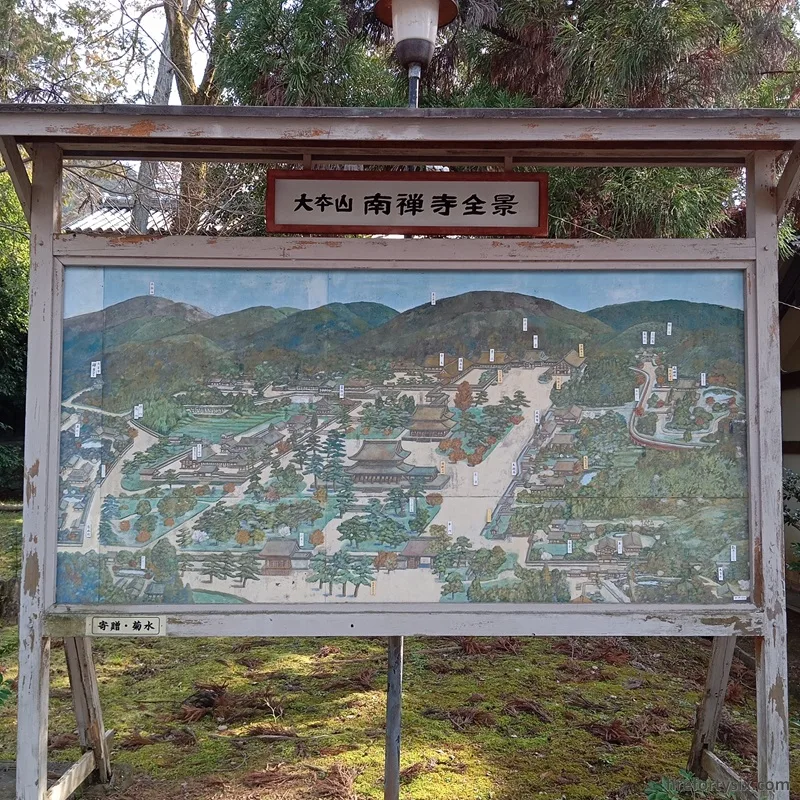
Even though it’s one of the more famous temples in Kyoto, there weren’t that many visitors.
Compared to the suffocating hordes that seem to perpetually flood super popular ones like Kiyomizudera, the absence of a crowd was refreshing.
Temples are generally places where people go to experience inner peace, and we certainly felt that during our leisurely stroll.
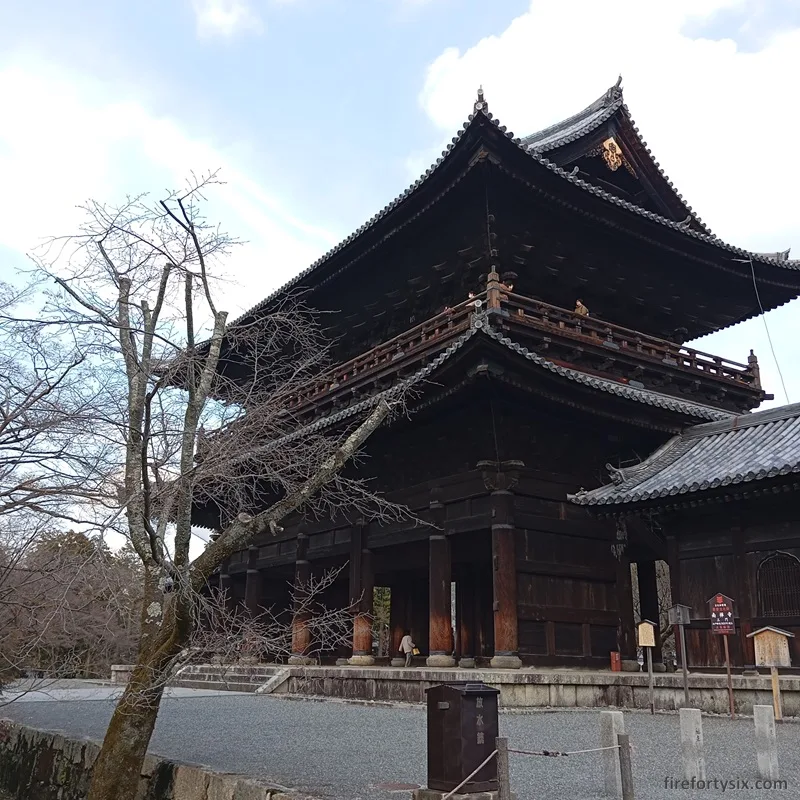
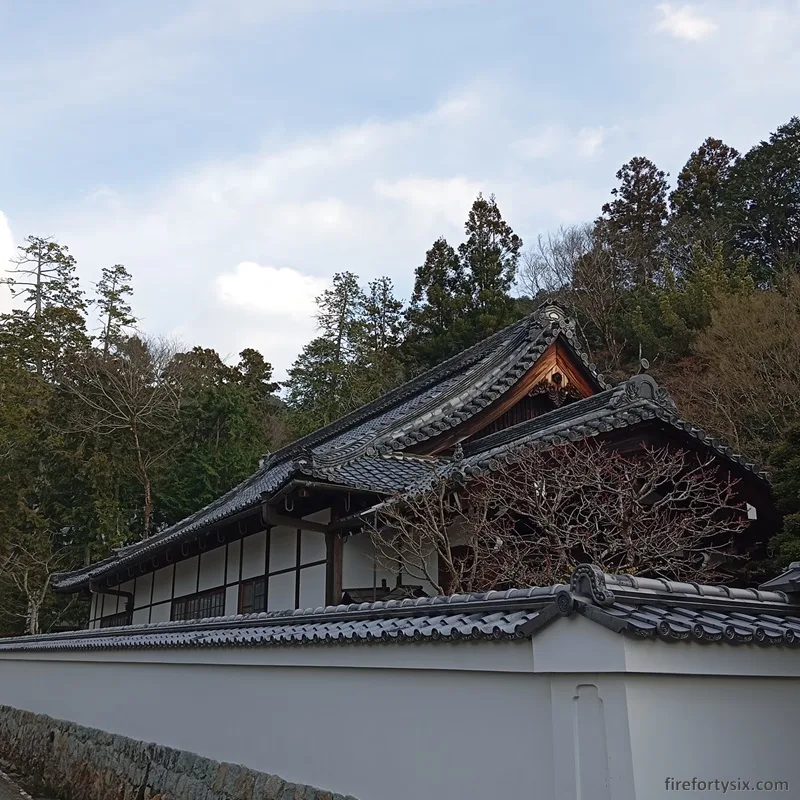
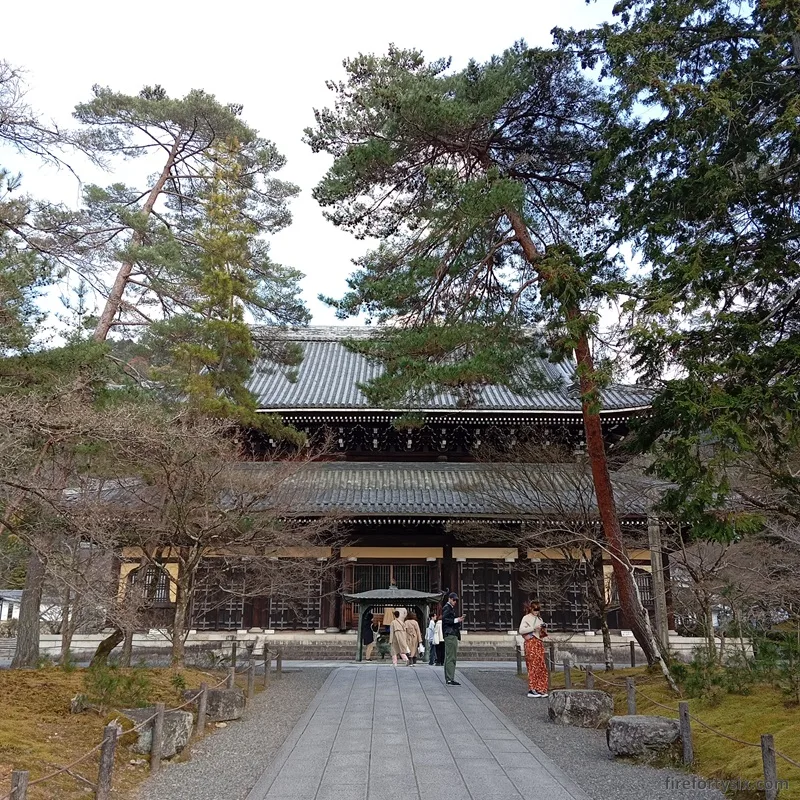

Nanzenji wasn’t as impressive as, say, Byodoin in Uji, but it certainly emanated the same calm and serene vibes.
One thing that it did have though, was an impressive system of aqueducts.
I had always assumed that this ancient system of water transport was exclusive to European cities, so it was quite a surprise to see them in Japan.
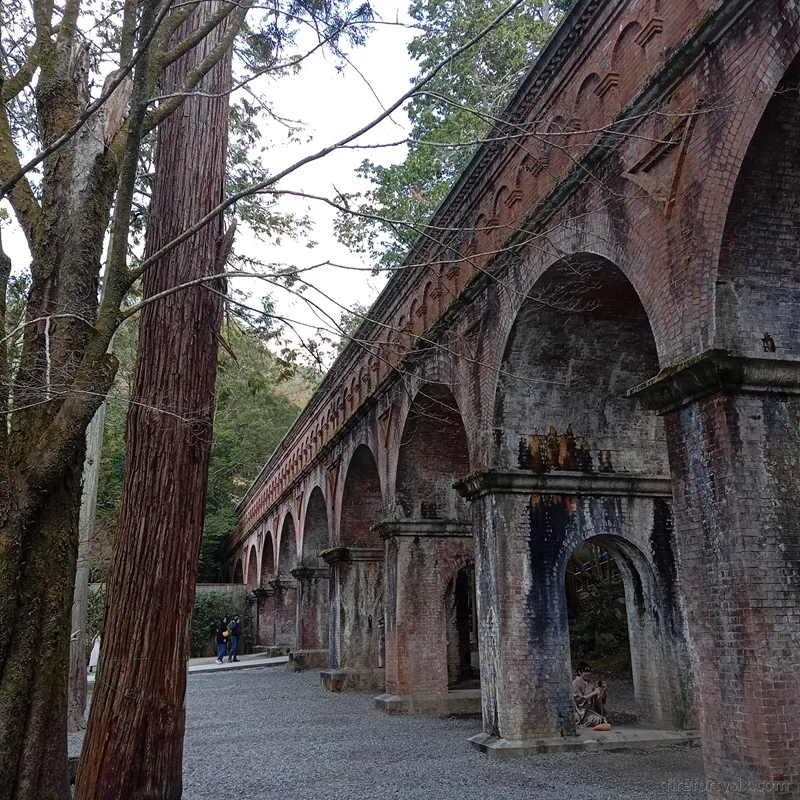
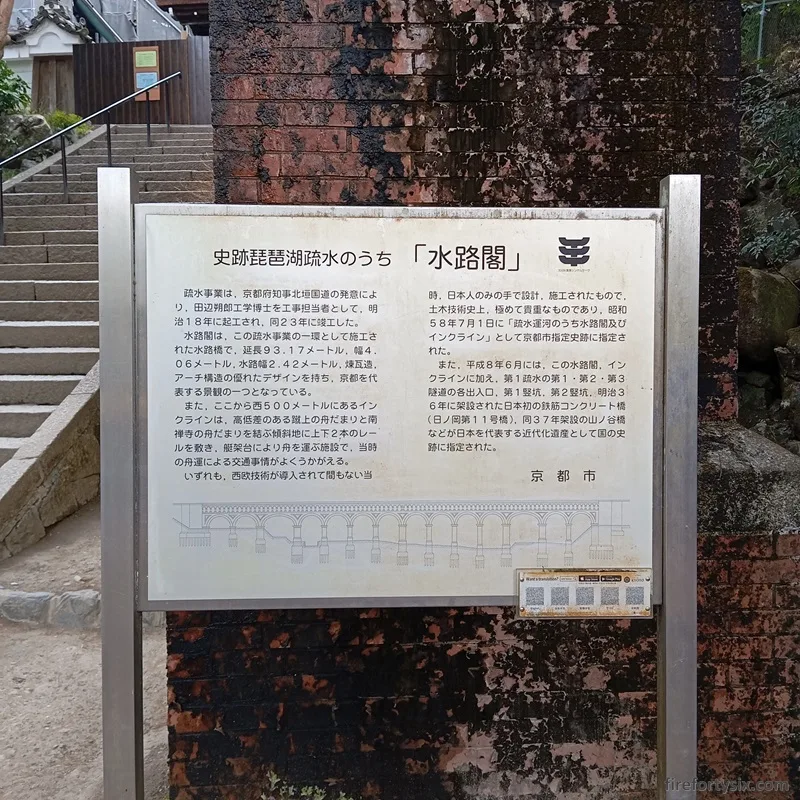
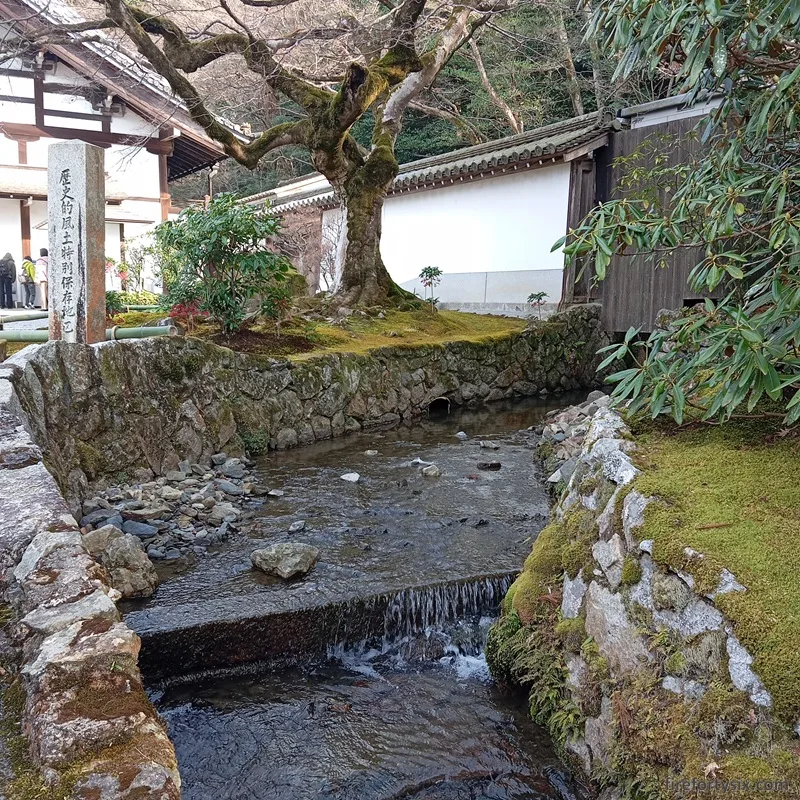
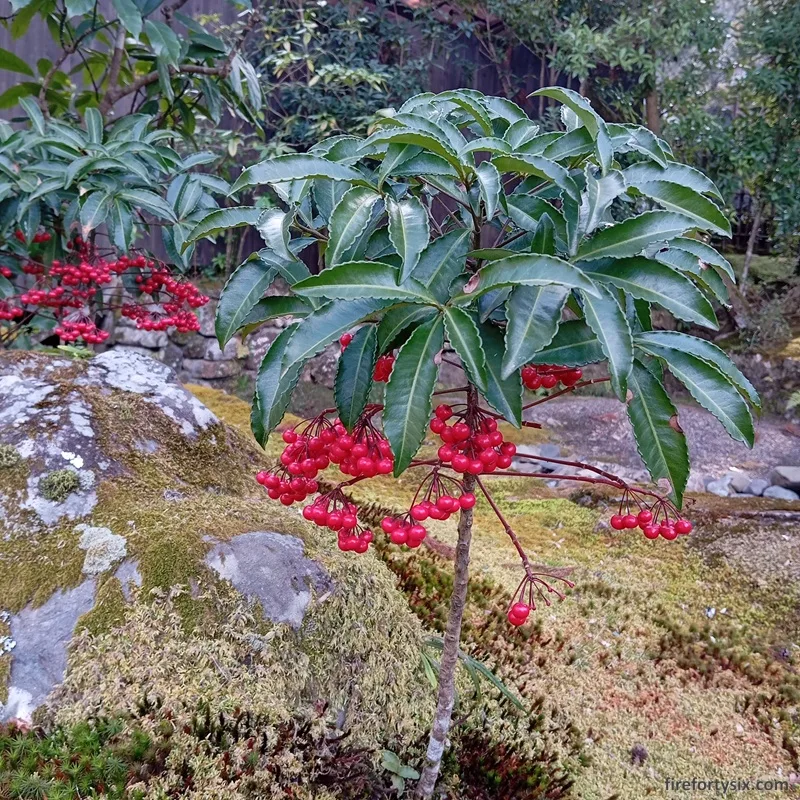
We could have spent more time exploring the grounds of Nanzenji Temple, but decided to move on to our next stop and left via a side entrance.
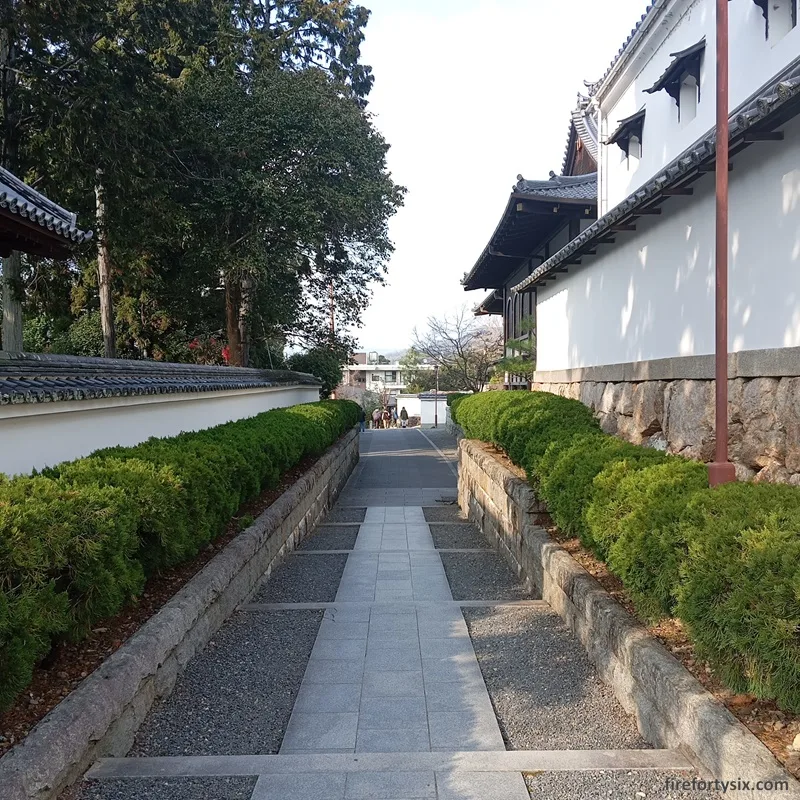
Philosopher’s Path
Despite being such a popular sight, the path to the Philosopher’s Path wasn’t as obvious as I had expected.
Since it wasn’t the tourist high season yet, we couldn’t simply follow the crowd because there was no crowd. On the contrary, the streets were eerily empty.

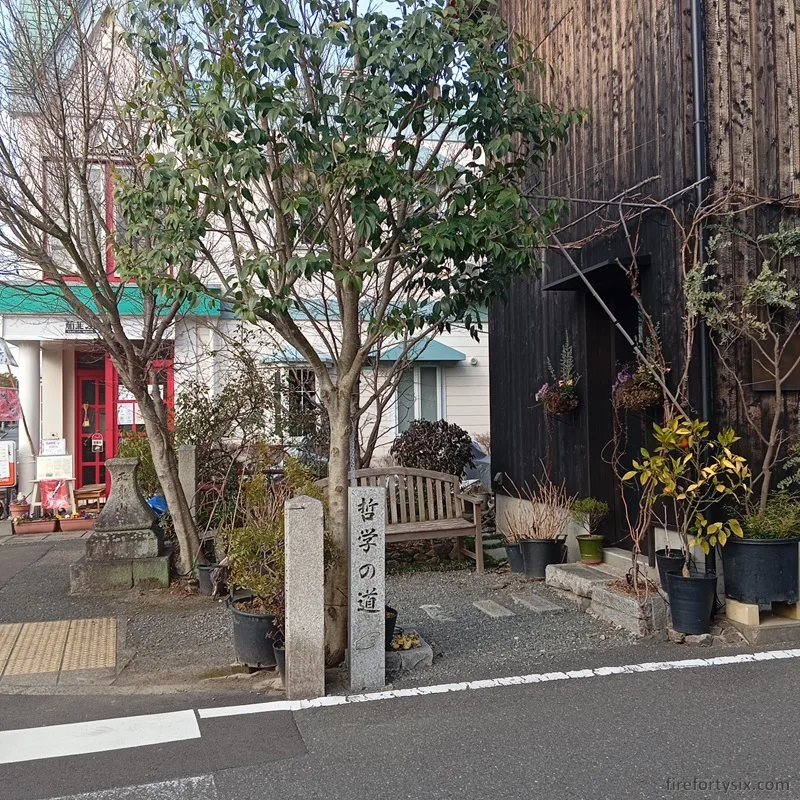
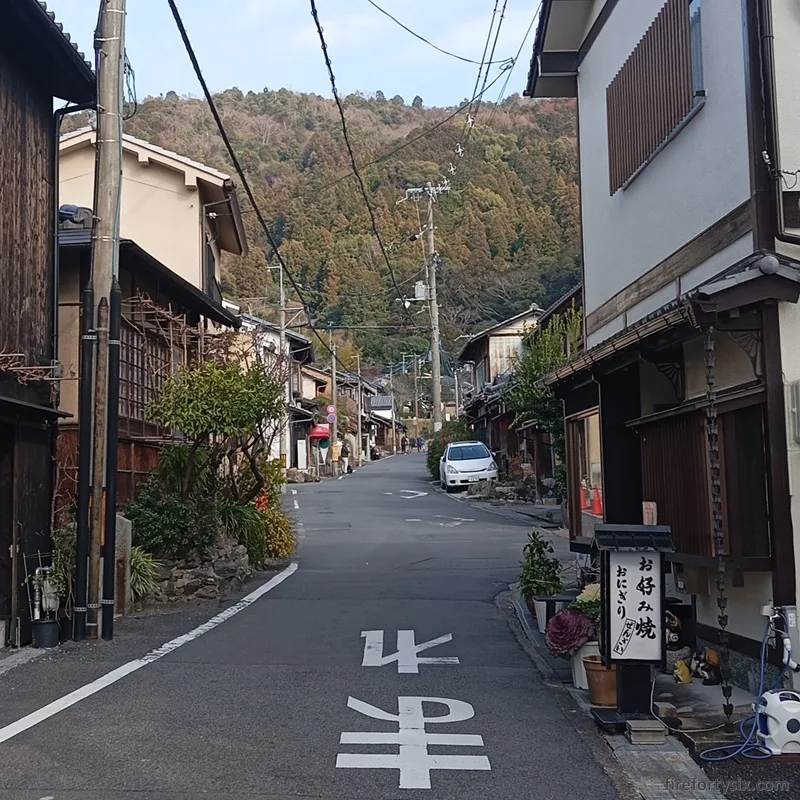
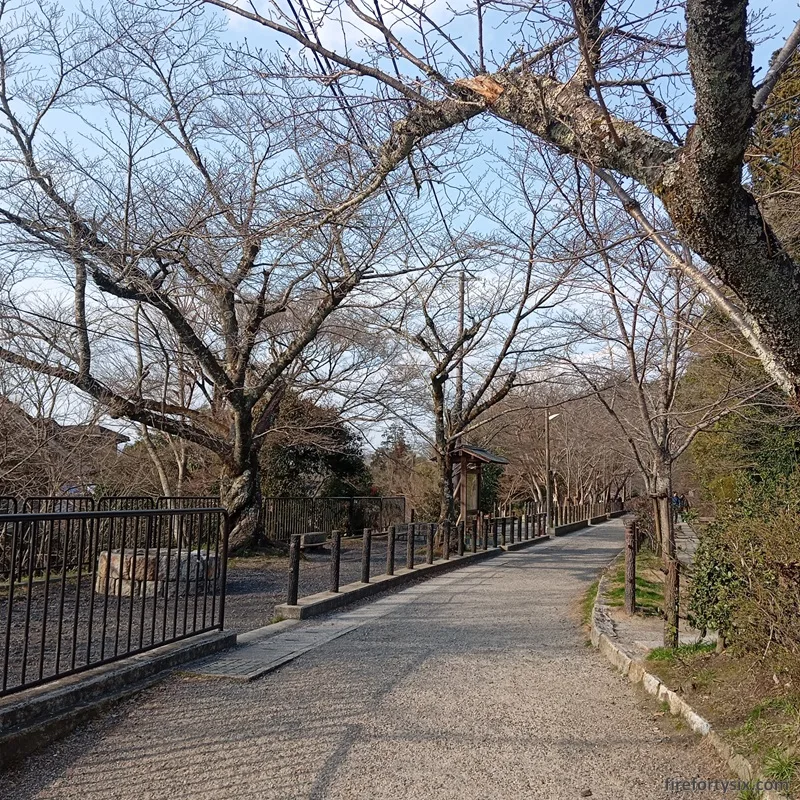
Little signs and markers appeared here and there, but we relied heavily on Google Maps to ensure that we were headed in the right direction.
Even when Google stated that we had reached our destination, I remained skeptical. That is, until I saw a concrete slab with 哲学の道 (Tetsugaku no Michi) carved vertically on its surface.

The main reason why tourists flock to the Philosopher’s Path is because of the hundreds of sakura trees that line the two kilometre route.
Almost all the photos I’ve seen online have featured them fully bloomed, forming a pretty pink canopy. That ideal image stood in stark contrast to the bare branches that greeted us.
We were early by only a few weeks, but when it comes to something as ephemeral and fleeting as sakura blooms, it might as well have been an eternity away.
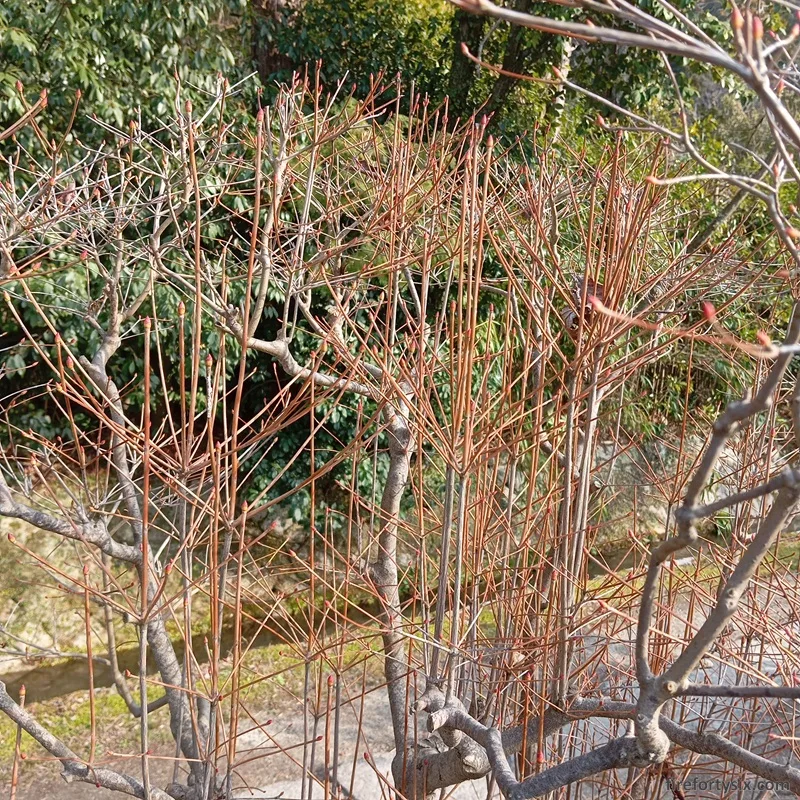
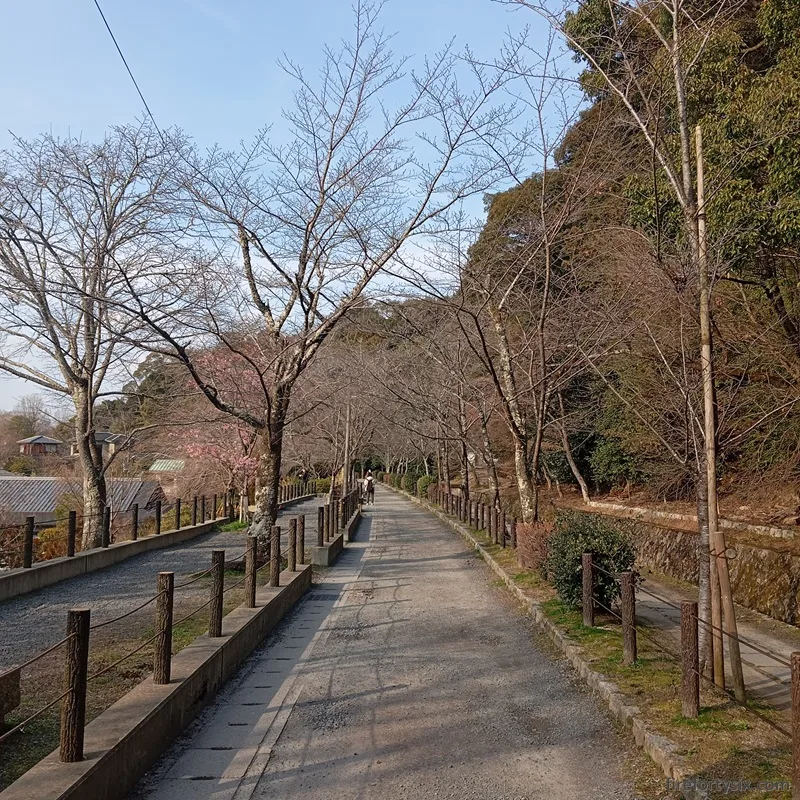
It wasn’t a total wash, because we did spot a lone flowering tree in the distance.
A laminated printout attached to the tree identified it as a 河津桜, or Kawazu cherry blossom, one of the earliest blooming varieties.
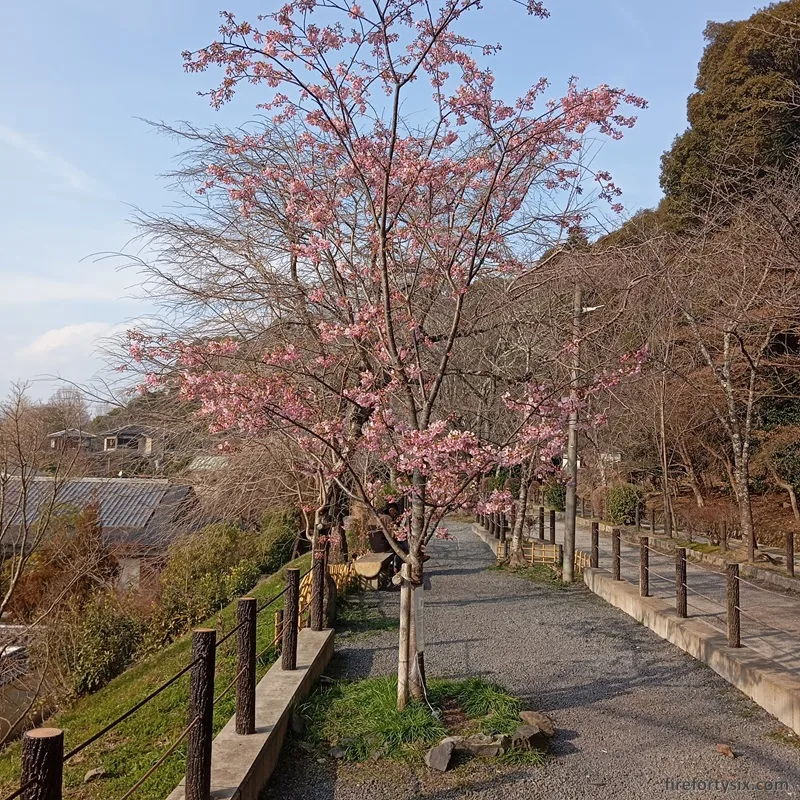
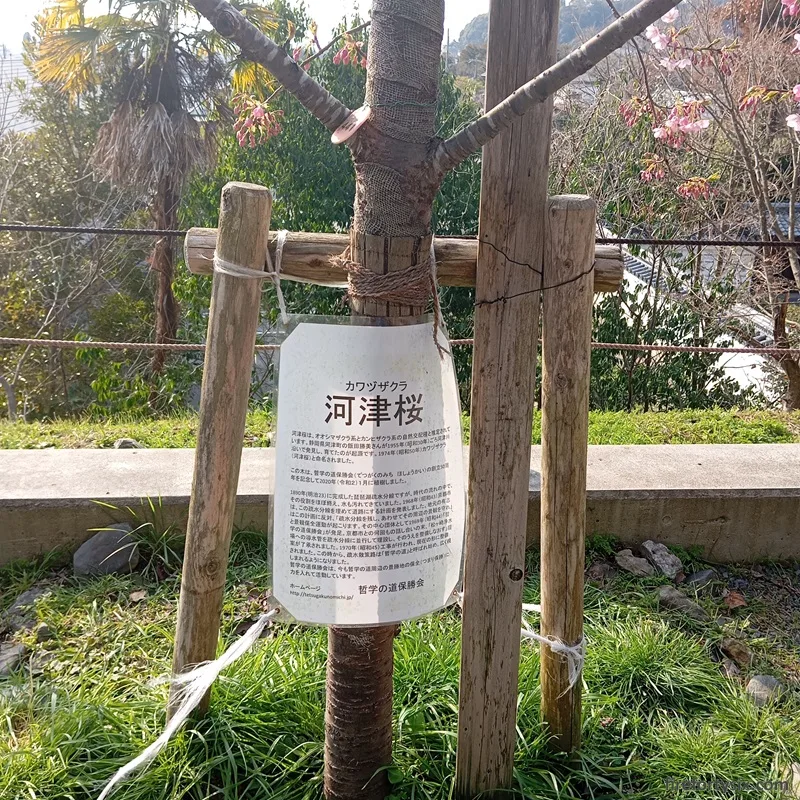
Though it clearly still needed more time before reaching its full crowning glory, there were enough blooms for The Wife to capture in her camera frame. As long as she zoomed tight enough, that is.
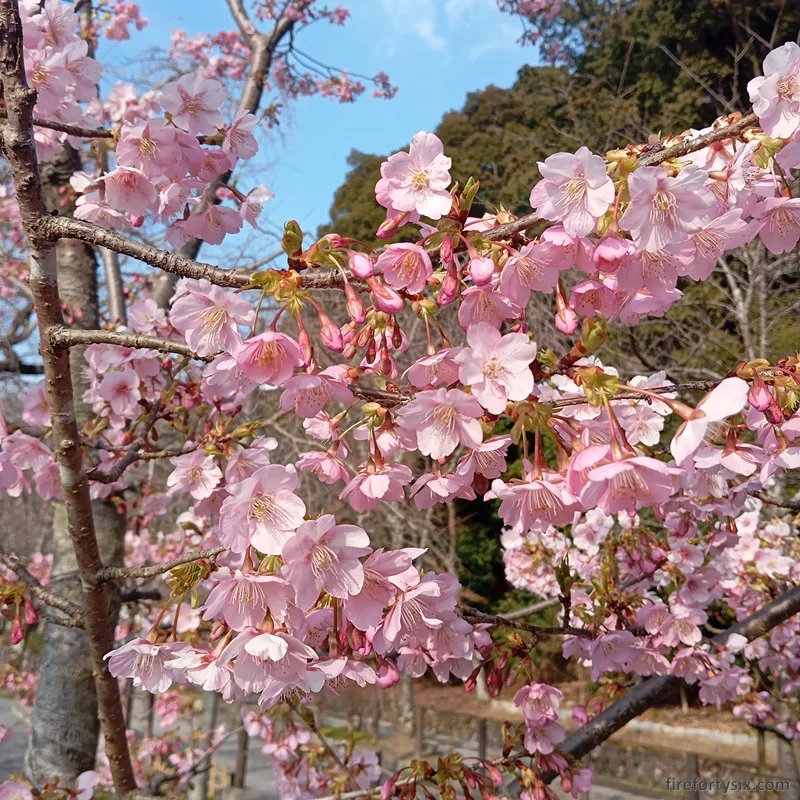
One silver lining of missing out on the sea of sakura was the complete lack of people.
I’ve read online that it can get quite packed during high season, with shoulder-to-shoulder foot traffic. Making for an unconducive environment for the quiet contemplation of life.
So, in a sense, we were actually there at the right time, able to fully immerse ourselves in the true essence of walking down the Philosopher’s Path.
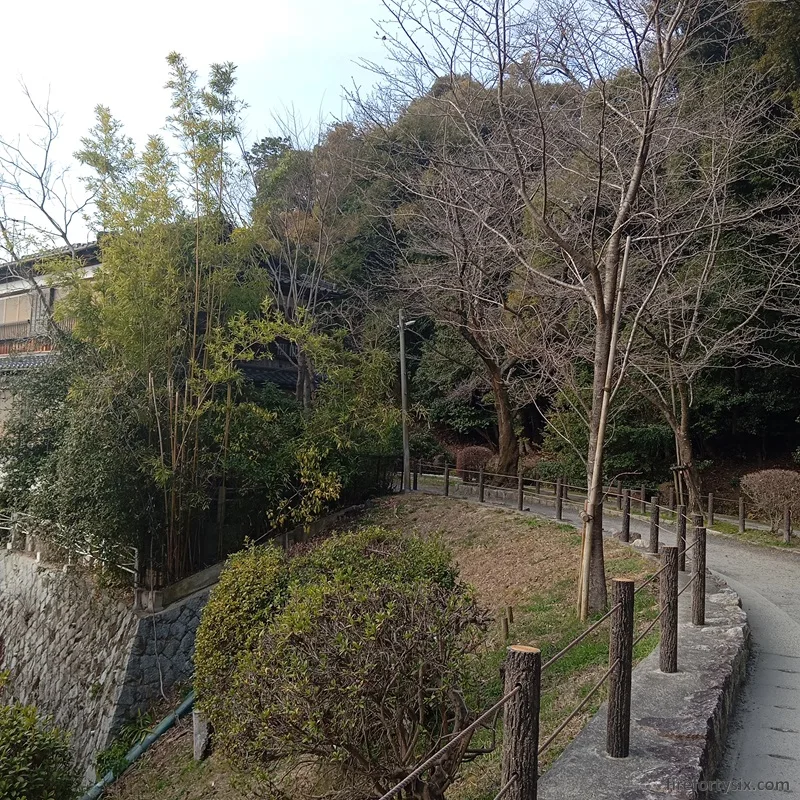
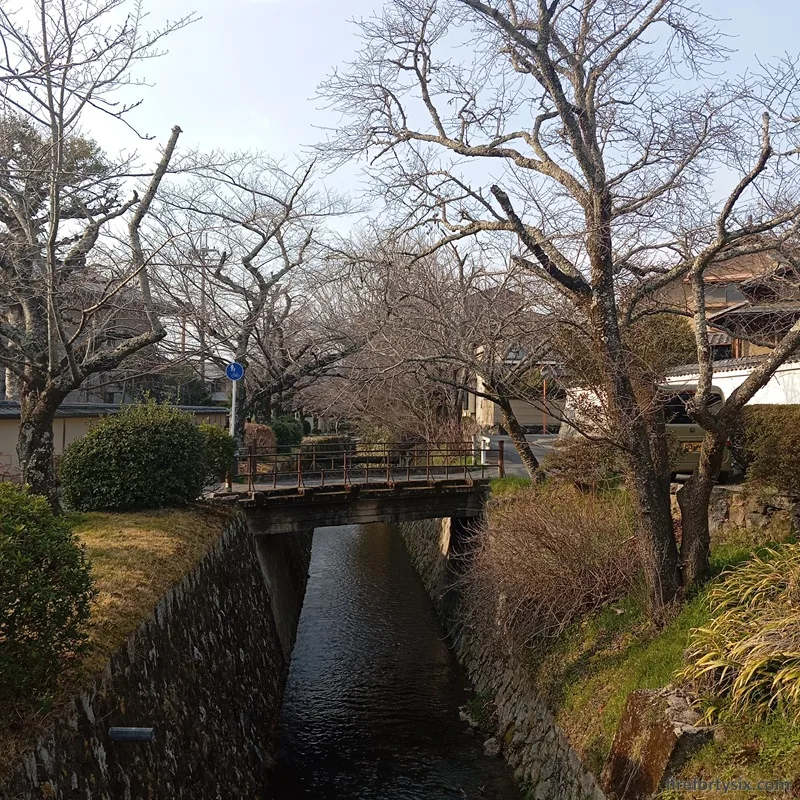
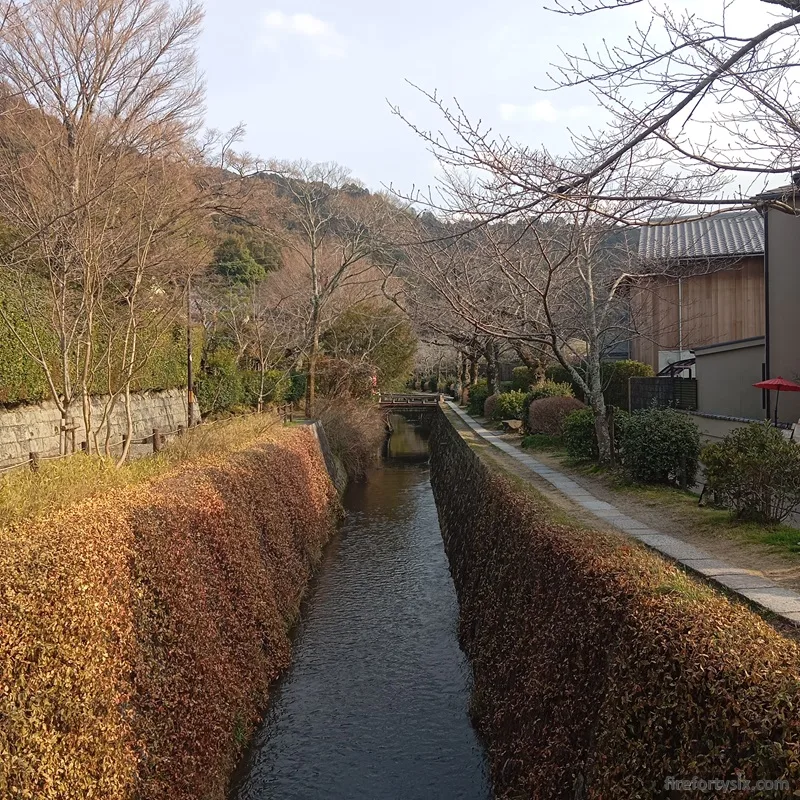

Time passed by slowly, as we progressed further and further down the long and winding route.
At times, it felt like we had accidently veered off course, but weather-worn signs with barely legible directions reassured us that we were right on track.
We even had companions. A pair of ducks swam beside us for part of the way, gently paddling their webbed feet under the surface.
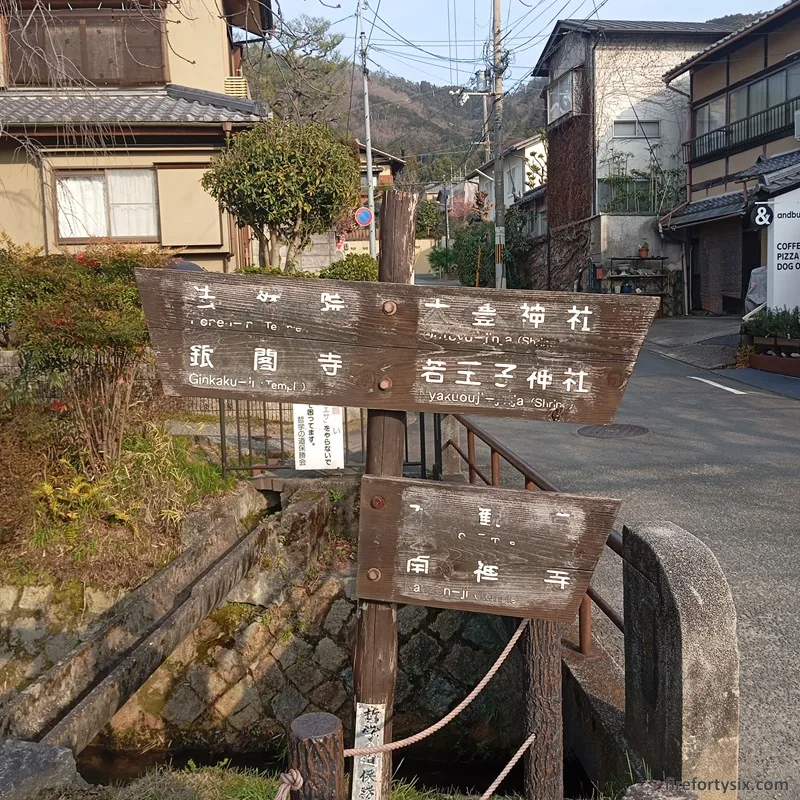

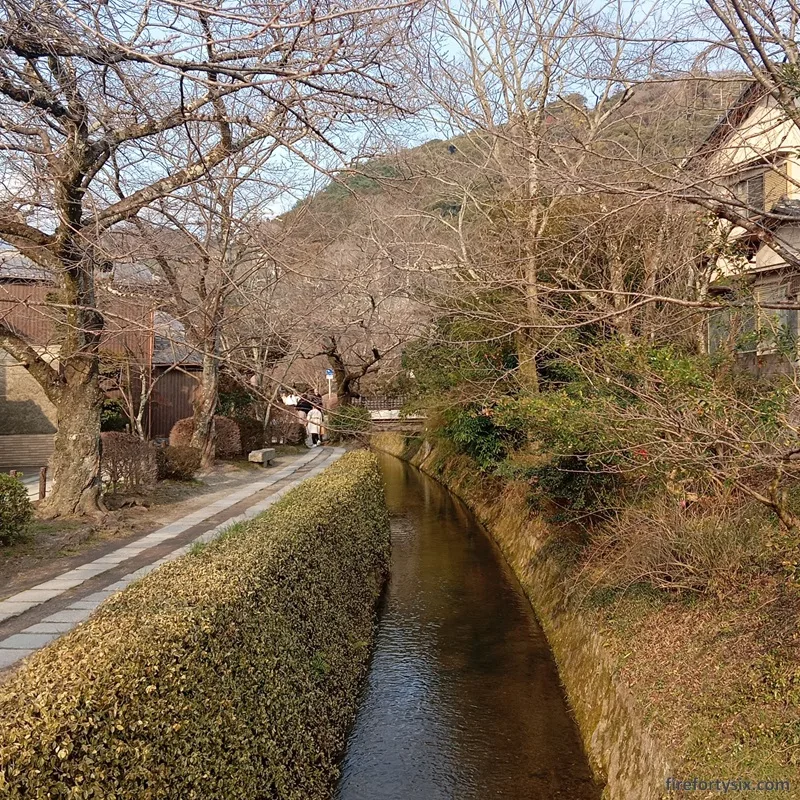
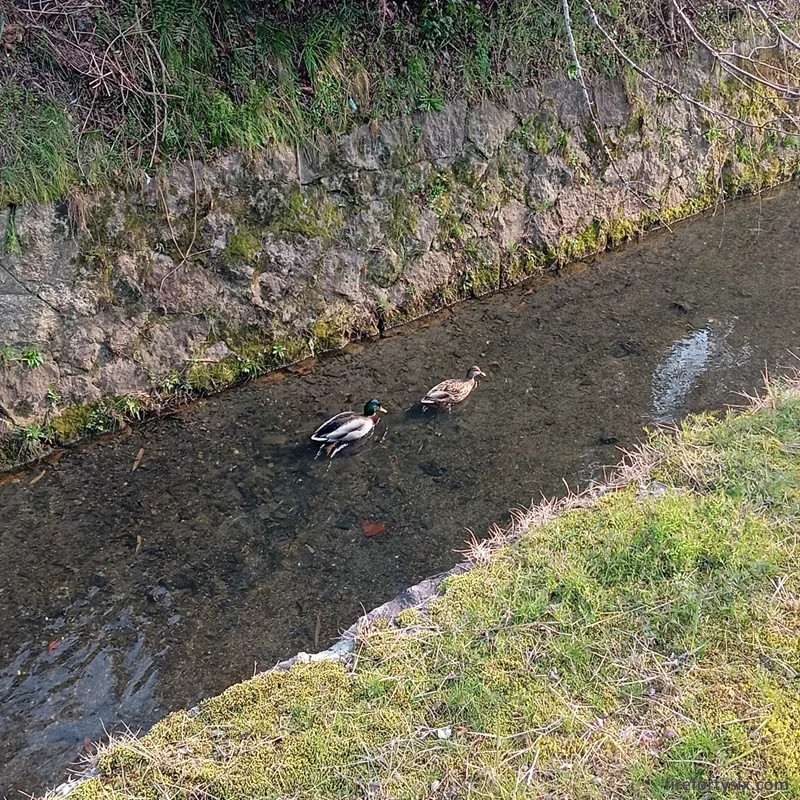
After a long while, civilisation re-appeared. Traffic sounds started returning and retail shops started popping up. We had come to the end of the Philosopher’s Path.
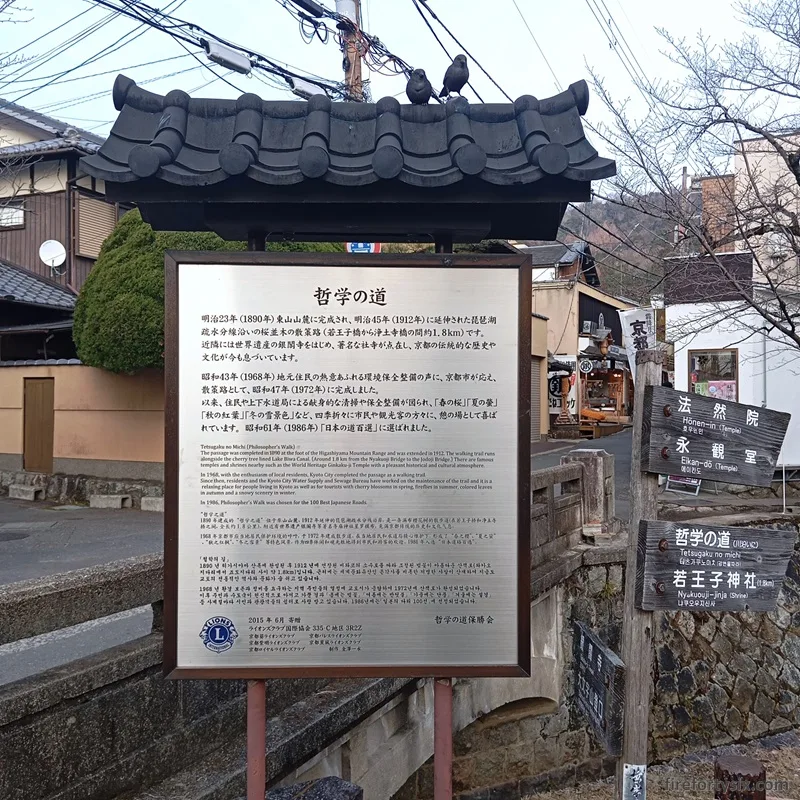
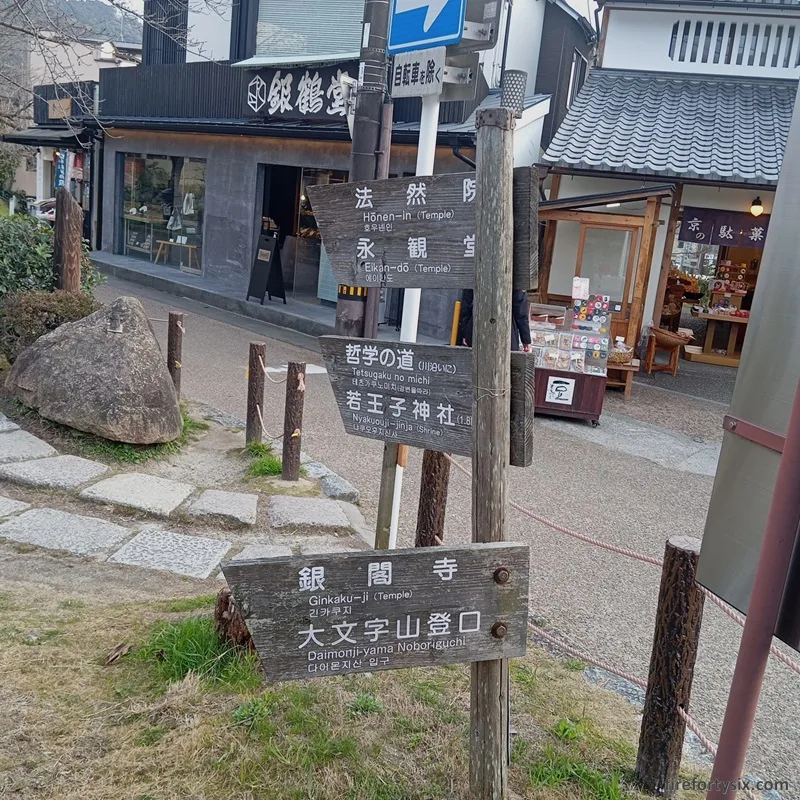
Ginkakuji
Taking our cue from the wooden signboards, we turned right and walked up the slope to Ginkakuji.
Entrance tickets were still available, but there wasn’t much time left before visitors would be asked to leave. There was definitely not enough time to sufficiently explore the compound.
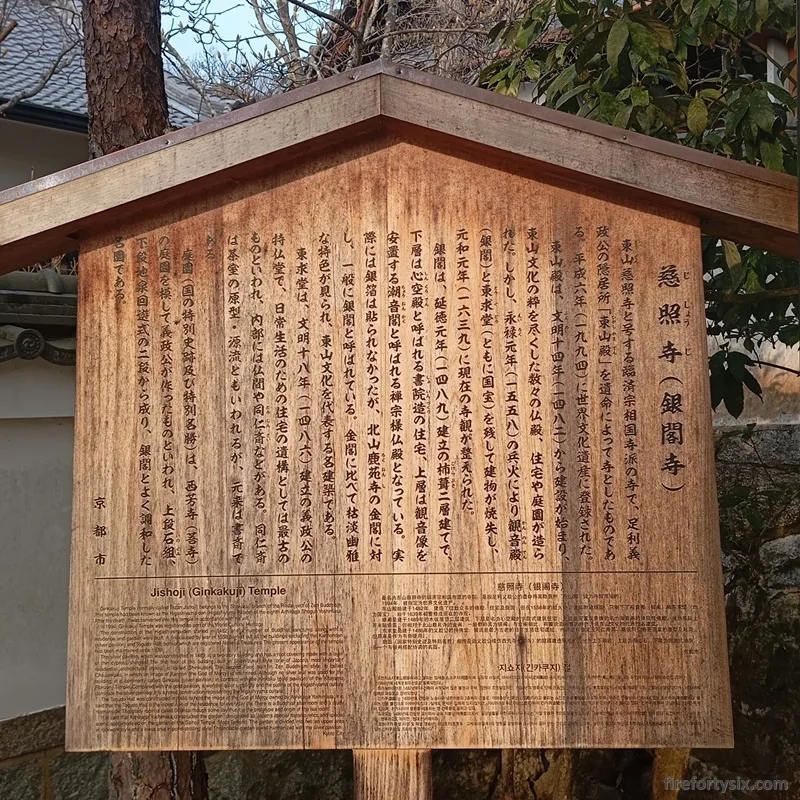
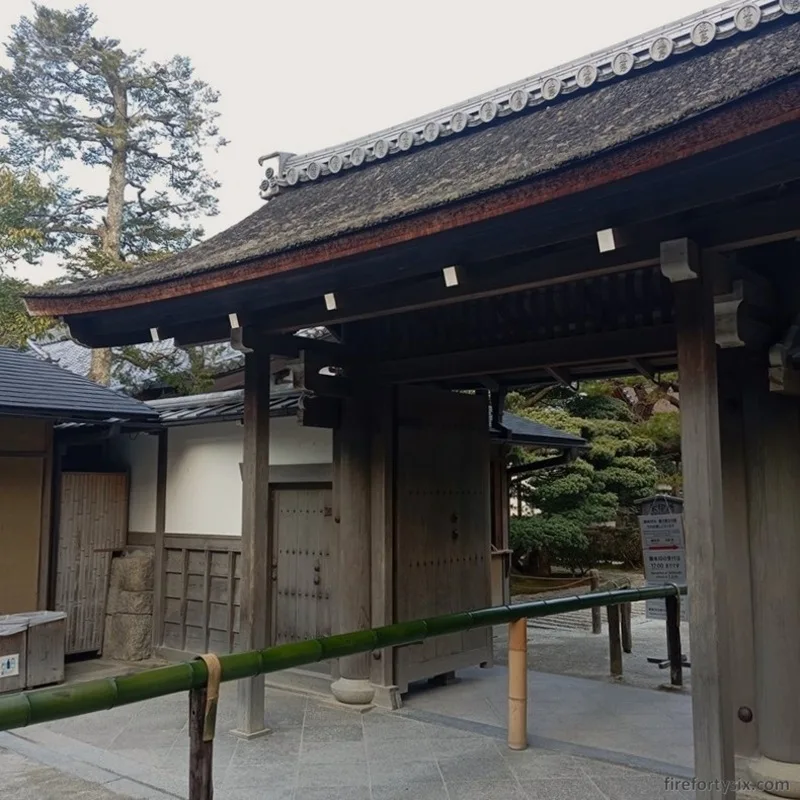
Also, we were quite tired by then, both physically and mentally. So we simply peeked inside, as much as we could without actually stepping in, and called it a day.
Maybe, during our next visit to Kyoto, we’ll come back and do it justice.
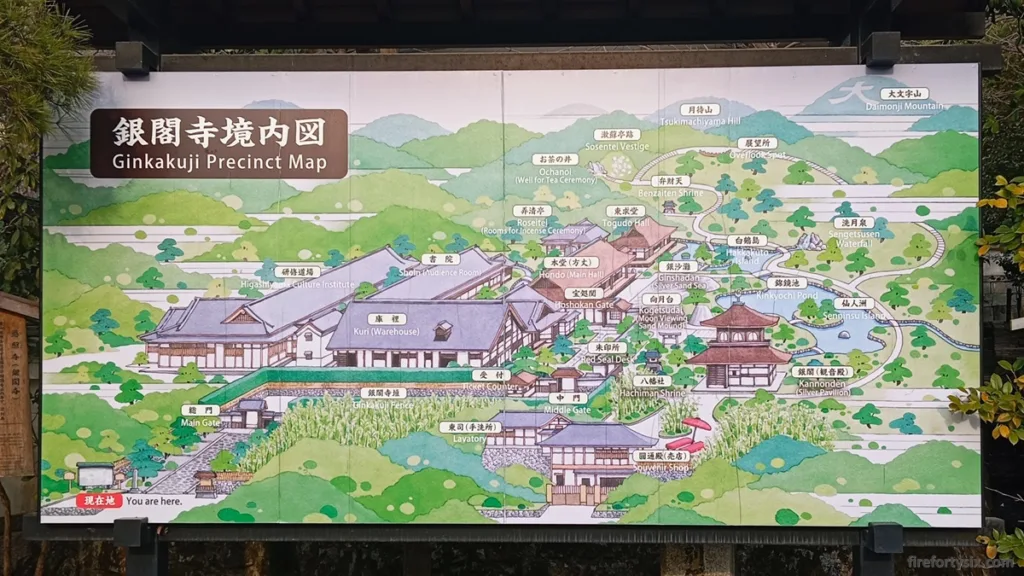
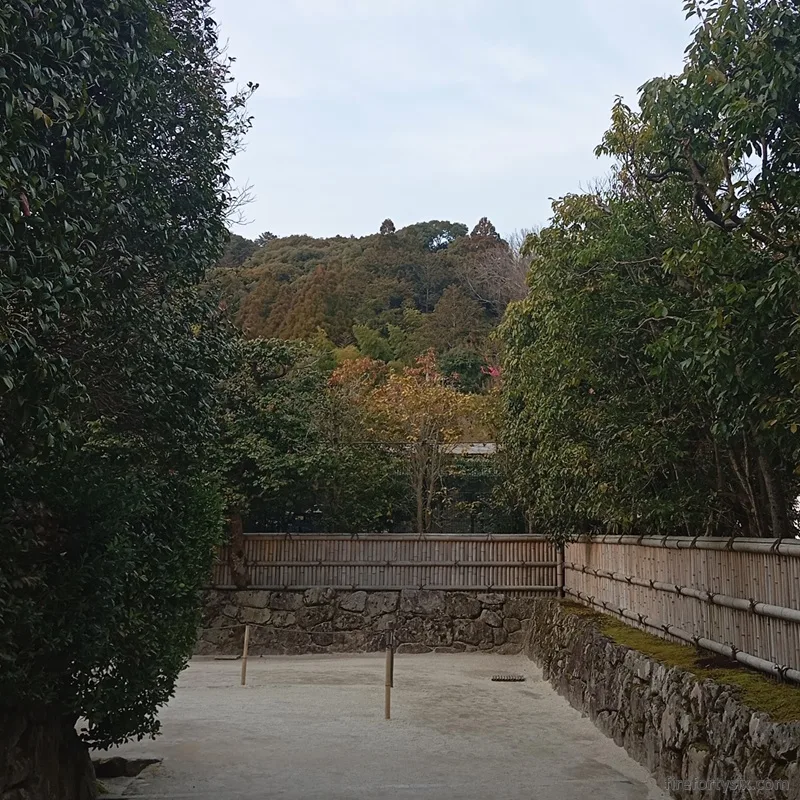
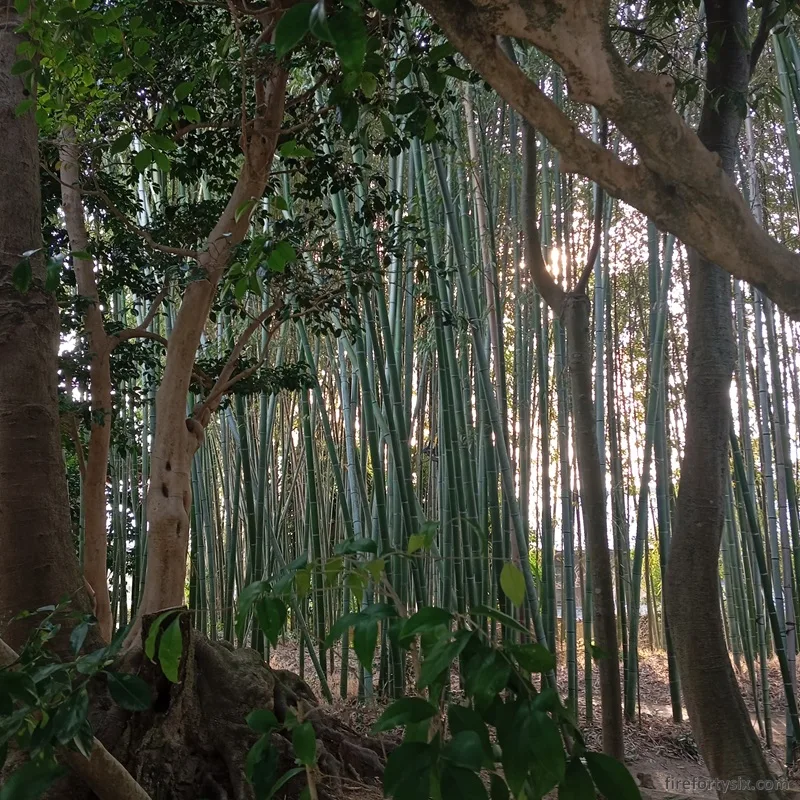
Walking Route
From start to finish, our walk from OMO5 Kyoto Gion to Ginkakuji (a.k.a. Higashiyama Jishoji) took five hours, inclusive of lunch at Rengetsujaya.
I mapped out the path we took and all the stops we made, and Google told us that we had covered a grand total of 5.7 kilometres that day.
It was quite an achievement for us and easily one of the longest walks we’ve ever completed while on vacation. The following day was spent recovering with a spot of light shopping near our hotel.
Oh, plus two accidental rounds of heavy drinking in a sake bar near Nishiki Market, but more on that in a later post.

